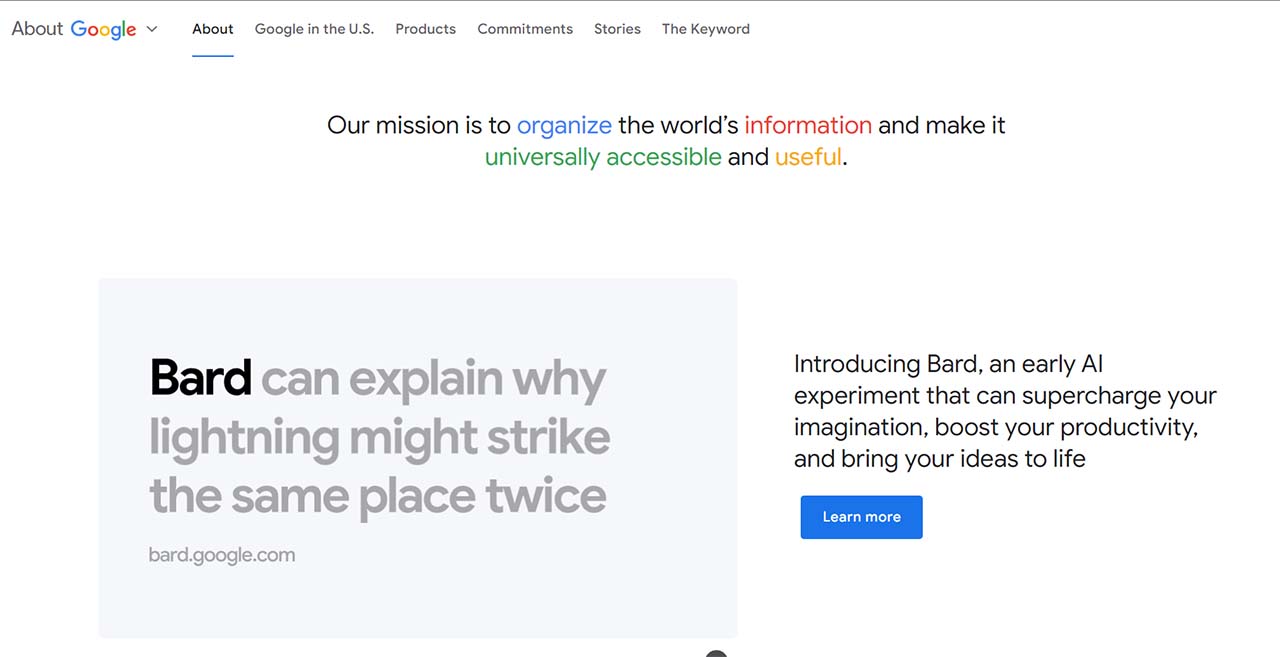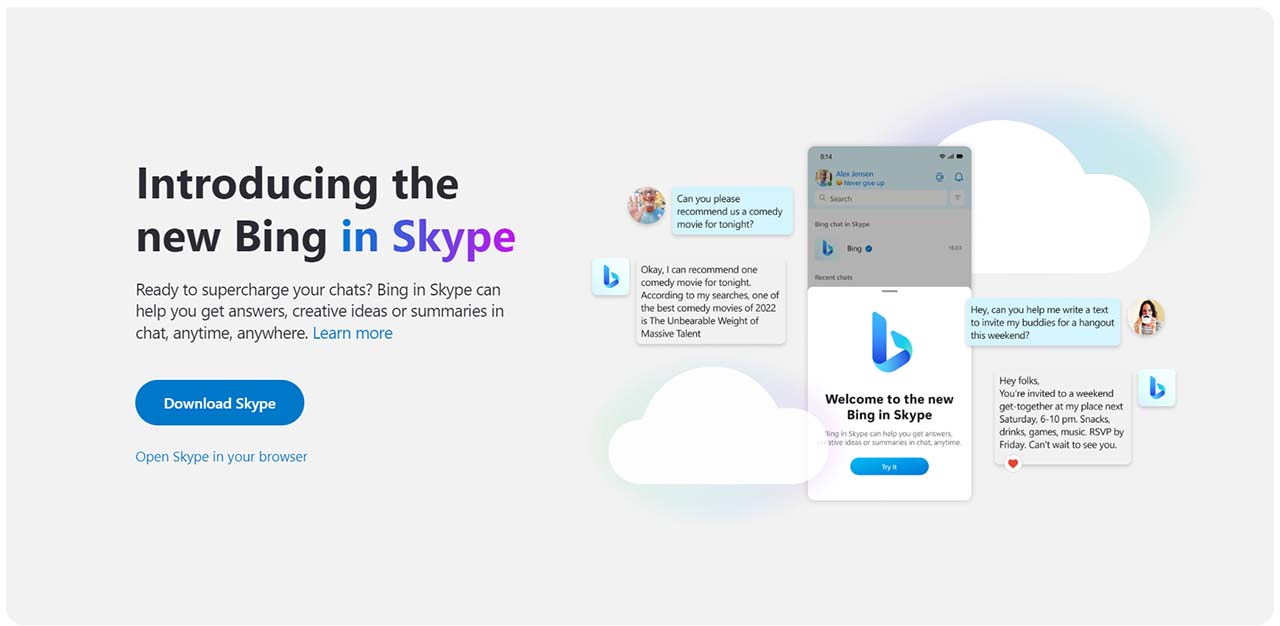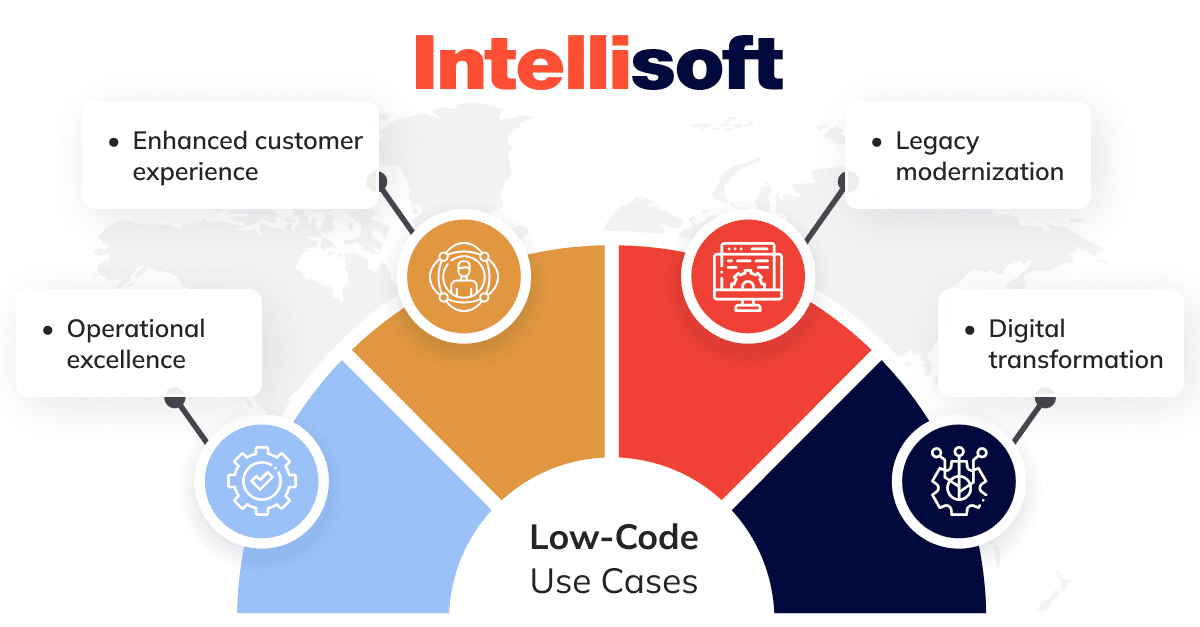6 IT Outsourcing Case Studies Every Startup Can Learn From

For many years IT outsourcing has been a popular option among technology companies. Nearly 57% of global companies hire offshore developers seeking to focus on their core business activities.
Besides multiple successful cases of outsourcing by big companies, many startups still beware of outsourcing web development overseas for trust and delivery concerns. However, the practice of big players shows the reality of outsourcing is wholly different.
In this article, I want to use some successful cases of outsourcing among big companies to disrupt some misconceptions and deduce some lessons that cofounders can follow. So let us start!


Slack: Outsourcing is a Choice of Early-Stage Startups
Slack is a real-time office collaboration tool featuring chat rooms (channels) by topic, private groups, and direct messaging. Needless to say, that now this is one of the most popular tools for business communication with nearly 12 million daily users (as per 2020), and this number is expected to reach 79 million by 2025.
At the same time, Slack stands out as an example of the most successful outsource cases. In fact, in a bid to save raised funds, the company outsourced design and app development services from the very beginning. Relying on outsourced workforce, Slack managed to get 15,000 users during 2 weeks after launch and to become a startup unicorn in 2014.
Slack outsourcing case: Lesson learnt
Slack’s case is a vivid example of how a startup outsources its development to win ample investments and thrive with thousands of users.

WhatsApp: Find the Expertise You Lack
Whatsapp is an app that hardly needs a presentation. Hands down, this is probably the most popular messaging app, with over 2 billion users around the globe. However, the wind has not always blown to WhatsApp founders’ backs.
Back in 2012, at the outset of WhatsApp’s story, it was a small organization with only 30 full-time employees and five part-timers. The company started only with $250,000 capital raised at the seed round.
Frankly saying, this is little to kickstart a product. But WhatsApp needed to keep its costs down and find the web development talents with the quality/price balance. This is why the company turned to East Europe, the biggest outsourcing hub, to find tech talents for developments.
WhatsApp outsourcing case: Lesson learnt
Outsourcing does not only help to reduce costs, but also opens access to an enormous talent pool. Isn’t this what matters when starting a product?
CitiGroup: Outsourcing Helps to Save Up
Among the famous outsourcing examples, Citigroup, a US-based multinational investment corporation probably sits atop as the oldest company to hire overseas. Citi has been hiring people offshore since 1992, outsourcing workforce from India, the Philippines, and Poland. The company’s efforts in this direction went even further. In 2014 Citi slashed 11,000 jobs at its HQ, at least a quarter of which were IT specialists, to bring them offshore. This move saved the company $1.1bn a year.
Outsourcing tech development is a widespread example among banking giants. For example, such banking entities as Bank of America, Barclays, Goldman Sachs, and J.P. Morgan also hire developers overseas.
CityGroup outsourcing case: Lesson learnt
Outsourcing can be a viable option not only for startups, but also big corporations and banks.
.png)
Basecamp: Outsource Web Development and Focus on Business
Basecamp, a company offering project management solutions, is another example of a successful outsourcing case. At some point in growth, the company faced the “cobbler’s children” problem. While others were using their tool to manage projects and work, they had internal issues managing workflow and client support. As a result, Basecamp decided to outsource some essential development functions to resolve this situation so that their internal teams could focus on business.
Basecamp outsourcing case: Lesson learnt:
The tip for picking up from Basecamp is identifying your weak spots in the company and outsourcing development work to remote programmers to drive internal improvements for the organization.

Google: Outsource to Cut Labor Expenses
It turns out even the 89,000+ in-house Google army cannot handle the massive workloads. This is why Google outsources global talents and partners with contractors for its AdWords project, which completes the company’s lion’s share in revenue (2017). According to Bloomberg, 2018 was the first year when the number of Google’s contractors surpassed direct employees .
Google purports the first reason to outsource is the access to the global pool of talents and expertise that lacks within Google's walls.
Secondly, by outsourcing, the company skips employment and operation costs.
Google outsourcing case: Lesson learnt
When it comes to outsourcing – take it rationally. If you cannot find the right talents in your current personal – no need to seek them in the labor market. It takes a little time to find the expert you need with no additional expenses required.
Alibaba: Outsource the Talents You Need
Alibaba, the Asian e-commerce giant, is another example of successful outsourcing. As of now, the company wields 779 million active customers and has 149,2 billion in revenue. In fact, the company has outsourced its website design and development work.
Back in the 90s Jack Ma, Alibaba’s founder faced a scarcity of resources. There were Chinese specialists with expertise in e-commerce development. Another complication was that China had formidable internet restrictions, which was a hindrance for website development.
So the company started to seek partners and outsourced overseas across a range of different projects, and they found the human resources they needed in the US. By hiring specialists overseas, the website started growing at an astronomical pace. For instance, in 2014 Alibaba hit the record by becoming the largest IPO in history and raising $25B.
Alibaba outsourcing case: Lesson learnt
You should clearly see your weaknesses. By knowing the talent gaps in the region, Alibaba managed to outsource resources elsewhere and grow into a flourishing business.
Recap: Why Companies Outsource?

As it stems from the IT outsourcing examples, hiring developers remotely helps tackle many business problems. Let’s summarise some of them. Here are the key objectives that companies pursue when outsourcing developers from abroad:
Cost reduction
working with remote contractors allows to save up on operating costs. The economic interests play a more critical role, especially in the midst of COVID-19 outbreak, when the economic environment is unstable;
Focusing on business
Ooutsourcing web/app development functions, companies manage to double down on the product development, scaling-up and enhancing the speed to market;
Saving funds at the beginning
Young startups tend to outsource web/app development at the beginning of their journey to save funds and invest them into the product;
Gain new expertise
If you want to test a new AI-based technology for your product or some AR feature for an app, employing a person might be too overwhelming. Outsourcing a subject specialist with the needed skills might be a less effort-consuming solution;
Avoid extra labor costs
Again, you do not have to go through all the employment fuss and provide all the social benefits, when you can outsource product development to a contractor and save your budget.
.png)
Conclusion
The IT outsourcing cases I described show that outsourcing is a viable solution that can save your business, regardless of its size, business model or age. If you want to know more, contact our team , so you could figure out what is the optimal solution for your business.
Tell us about your idea. We will reach you out.

- 7 OUTSOURCING CASE STUDIES THAT YOUR BUSINESS CAN LEARN FROM
7 Outsourcing Case Studies That Your Business Can Learn From
Outsourcing is becoming a popular business strategy for companies looking to streamline their operations and increase efficiency. Whether it’s to save costs, increase efficiency, or access specialized expertise, outsourcing can offer a range of benefits to companies looking to grow and succeed.
Businesses can focus on their core capabilities while reducing expenses by outsourcing specific tasks or projects to specialized service providers. However, not all outsourcing efforts are made equal, and it’s essential to understand the best practices and potential hazards of outsourcing.
In this blog post, we’ll explore 7 outsourcing case studies that showcase real-life examples of considerable outsourcing efforts. By taking a closer look at real-life examples of outsourcing partnerships, businesses can gain useful insights into both the best practices of outsourcing and its potential pitfalls.
Table of Contents
What is outsourcing?
Why do you need to outsource, when do you need outsourcing, what should you outsource.
Outsourcing is the practice of hiring a third-party company or contractor to perform services that are traditionally handled in-house by a business. Outsourcing has grown in popularity in recent years thanks to technological improvements and globalization.

Because of the pandemic, the industry expanded even further. At a compound annual growth rate of 9.4%, the worldwide outsourcing market might expand from about $262 billion in 2022 to $525 billion by 2030 .
Your business may be large and have strong commercial acumen and technical abilities, but you cannot manage a business on your own. You’ll need a hand from a talented team; that’s when outsourcing practice comes into play.

Here are some reasons why you should outsource certain functions or tasks in order to grow your business:
Access to specialized expertise : Businesses can use outsourcing to gain access to specialized knowledge and expertise that they may not have in-house, such as software development, digital marketing , or accounting.
Cost savings : Outsourcing can be a cost-effective choice for organizations because it reduces the requirement for new staff recruitment and training. It also helps companies to avoid the expenditures of providing benefits and office space.
Boost efficiency : Businesses can focus on their core capabilities and enhance overall efficiency by outsourcing non-essential company services. It also permits staff to concentrate on higher-level duties that are more strategic and vital to the company’s success.
Scalability : Outsourcing allows organizations to grow their teams up and down as needed without the long-term commitment of hiring full-time staff. This enables firms to respond swiftly to market developments or changes in demand for their products or services.
Enhance quality : Outsourcing can increase the quality of work by giving you access to specialized expertise and resources that your business might not have in-house. It also enables organizations to benefit from the outsourcing provider’s best practices and experience.
The time to outsource can be a challenging one for some businesses. The stage at which a company needs to outsource is different; some businesses must outsource at the initial stages, while others may prefer to outsource when they have established a firm foundation.
The situations in which your company needs to outsource might include some of the following:
Lack of in-house expertise : Outsourcing can provide access to specialized knowledge and skills if a company lacks the competence or resources to execute a specific activity or project.
The need to increase in workload : If a company’s workload or demand for its products or services suddenly increases, outsourcing can assist manage the burden and guarantee that deadlines are reached.
The economic condition of the company : Businesses may be more likely to outsource during moments of economic uncertainty in order to minimize costs and manage risks.
Outsourcing can be a cost-effective solution for firms suffering financial difficulties because it eliminates the need for hiring and training new staff as well as the costs involved with providing benefits and office space.
- Lack of specialized technology in-house : Outsourcing can provide access to specialized technology and software that may not be available in-house, allowing businesses to stay competitive and on top of industry trends.

Outsourcing is determined by the company’s needs and goals. There are many platforms that businesses can outsource such as IT, product development, human resources, etc. However, here are a few things that businesses often outsource:
- Special skill set required at a specific point in time
Businesses that outsource a certain set of abilities for a specific project or activity can save money by avoiding the expense of hiring and training additional staff. In addition, businesses might benefit from outsourcing by gaining access to specialized skills and resources that may not be available in-house.
- Expertise knowledge
By giving firms access to the most recent industry trends, best practices, and technology, outsourcing specialized knowledge can help firms stay competitive in fast-paced industries or markets.
- Performing repetitive tasks
Businesses can enhance their overall efficiency and productivity by outsourcing monotonous tasks. Additionally, quality control procedures are often in place at outsourcing providers to guarantee that repeated tasks are executed accurately and to a high degree.
Outsourcing case study examples
Google is a multinational technology corporation best known for its search engine, ad platforms, and cloud computing services. While Google is well-known for its cutting-edge technology, the firm has also relied on outsourcing to support its operations and achieve its goals.
Google has effectively outsourced its business operations and a variety of activities. Within their company, they have been aggressively utilizing the technique of software development outsourcing.

In 2016, Google stated that it had teamed with Wipro, an India-based outsourcing company, to support its cloud computing services. Wipro would provide technical support, cloud infrastructure management, and other services for Google’s cloud platform as part of the cooperation.
Google’s collaboration with Wipro enabled it to leverage Wipro’s experience in cloud computing and gain access to a larger pool of skilled individuals to support its operations. Wipro also benefited from the partnership by having access to Google’s cutting-edge technology and expanding its client base.
Alibaba is a global Chinese technology corporation specializing in e-commerce, retail, and cloud computing. The company is well-known for its creative business model, which mainly relies on outsourcing to support its operations and meet its objectives.
When Jack Ma founded the company in 1999, businesses were progressively shifting to the Internet for customer support, and he made the right decision to outsource everything.

Alibaba’s relationship with Cainiao Network, a logistics company specializing in package delivery and warehouse management, is one example of its outsourcing strategy. Alibaba stated in 2013 that it had purchased a controlling stake in Cainiao Network. The goal is to improve its logistical capabilities and the customer experience on its e-commerce platform.
Thanks to this partnership, Alibaba has been able to tap into specific skills in logistics and have access to a wider pool of trained individuals to support its business.
The collaboration has also aided Alibaba in expanding its logistics network and improving delivery times, which have been critical to the company’s success in China’s highly competitive e-commerce sector.
With over 2 billion active users globally, WhatsApp has become ubiquitous in modern communication. With a limited cash reserve, creators Jan Koum and Brian Acton concluded that outsourcing was the best product creation method.
WhatsApp’s success can be attributed to the use of Russian offshore developers. Outsourcing allowed the company to concentrate on core operations and reduce operating costs while developing a successful product.

When a company grew in reputation among its peers by personally assisting potential consumers, it garnered brand-loyal customers. This is also the case for WhatsApp. The company outsourced the app’s development to another company in order to make it cross-platform and gain more iOS users.
Later in 2014, Facebook paid $19 billion for the company. Despite the fact that it relocated its third-party contractors to the United States, offshore outsourcing was critical to the company’s growth and profitability.
Slack has its own exciting story among the success stories of businesses that have benefited from outsourcing. Slack is a cloud-based team collaboration software enabling real-time communication and collaboration.
Outsourcing has played a significant role in Slack’s phenomenal growth. The creator of Slack, Stewart Butterfield, wants to grow the business. But due to his lack of design skills to build the app, brand, and marketing website, he opted for outsourcing to achieve his goal.
MetaLab, a Canadian design team, was hired by the company to assist in developing a product from the beta version. Thanks to MetaLab’s feedback, the Slack team created a useful tool that acquired 15,000 users within 2 weeks of its launch.

The company raised a total of $5 billion in July 2017 and is still growing. According to Statista, Slack had over 10 million daily users in 2020 and was expected to reach around 80 million by 2025. Slack is a prime example of a top IT outsourcing success story that many businesses should learn from.
Skype is a telecommunications tool specializing in video and phone chats between devices via the Internet. While the business has acquired a good reputation in online communication, it relies on outsourcing to support its operations and achieve its goals.
One example of Skype’s outsourcing approach is its partnership with Luxoft, a worldwide IT services provider. This collaboration enabled Skype to leverage Luxoft’s software development skills and get access to a broader talent pool of trained experts to assist its operations.

This outsourcing effort also helped Skype reduce its development costs and improve the quality of its software. Skype has been able to scale its operations rapidly and efficiently by working with a specialized partner and outsourcing key functions.
To begin with, Github is a web-based version control and collaboration platform popular among software engineers and developers worldwide.
The company outsourced its backend activities, which were critical for GitHub sharing. The outsourced contractor was Scott Chacon, a Get specialist. Chacon was able to help the business with the development of the Gist backend.
This was an example of GitHub’s outsourcing approach to growing the company and achieving its goals. Over time, GitHub has become a prominent platform for open-source projects and collaboration, and its outsourcing model has contributed significantly to its success.

WaitWhile is a cloud-based tool for managing client lines and appointments. WaitWhile began with a base app that was well-liked by its early users, and scaling became inevitable. However, due to the limited technology, the company had to outsource the work to NeoITO, a global software development company.
WaitWhile has partnered with NeoITO to develop and maintain its platform. They also added new features and enhancements to the user experience. By outsourcing its software development needs, WaitWhile was able to accelerate the development of new features and functionality for its platform while also reducing its development costs.

In a nutshell, outsourcing has become a popular business technique that can give numerous advantages to businesses of all sizes and industries. The outsourcing case studies presented in this blog show how outsourcing may assist organizations in scaling their operations, gaining access to specialized skills, and improving the customer experience.
The success of these outsourcing case studies emphasizes the significance of choosing the proper outsourced partner. By learning from these real-life outsourcing case study examples, businesses can make informed decisions about their outsourcing strategy. They can also take into account the pitfalls of outsourcing that need to be avoided.

Make sure your store is not only in good shape but also thriving with a professional team yet at an affordable price.

How To Start a Jewelry Business in 2024 with 9 Simple Steps

How to organize a Magento 2 repository on GitHub
Stay in the know
Get special offers on the latest news from Mageplaza.
Earn $10 in reward now!

Home · bpo learning center · Outsourcing Case Studies: Lessons Learned From Successful and Failed Outsourcing
Dion Jay Tality
- January 21, 2024
Outsourcing Case Studies: Lessons Learned From Successful and Failed Outsourcing

Get our weekly newsletter
How-to guides, tips and actionable advice on how to manage your BPO team like a pro.
Table of Contents
Running a business is taking a risk. Sometimes entrepreneurs win; other times, they fail. Either way, the outsourcing case studies outlined below share some knowledge to guide you through your business decisions.
Business process outsourcing (BPO) is a double-edged sword. It can help you save time and money while improving your overall efficiency and business productivity. However, it might also lead to disastrous outcomes if not managed properly. So outsourcing is a calculated risk.
Explore the outsourcing projects below to learn more about successfully implementing the strategy.
Lessons Learned From Successful Outsourcing

First off, what is BPO ? It entails delegating non-core tasks to third-party service providers instead of handling them in-house. Companies of all sizes outsource both front-office and back-end operations.
Outsourcing has long been a popular strategy for scaling operations and reducing costs. The industry grew further due to the pandemic. The global BPO market size could grow from nearly $262 billion in 2022 to $525 billion by 2030 at a 9.4% compound annual growth rate (CAGR).
These facts and figures speak volumes about the industry’s market growth. Check out the BPO case studies below to learn how to make the most of outsourcing.
1. Slack: Accessing Experts To Grow a Business
Businesses, regardless of their size, have embraced Slack as a digital epicenter for fostering employee collaboration. What began as a humble messaging startup has rapidly evolved into an indispensable tool for facilitating seamless business communication.
The remarkable ascent of Slack owes a substantial debt to the strategic use of outsourcing. Early on, they enlisted the services of MetaLab, a distinguished Canadian design team, to craft the beta version of their business concept. MetaLab’s invaluable feedback paved the way for a user-friendly tool that swiftly gained widespread adoption.
Through astute decisions such as outsourcing logo design , engaging external teams for mobile application development, and investing in external website development expertise, Slack managed to secure a staggering $250 million investment, culminating in a total valuation of $5 billion in July 2017.
As of 2021, Slack’s valuation had soared to an impressive $27 billion. In 2020, it boasted a user base exceeding 10 million daily users, with projections indicating potential growth to nearly 80 million users by 2025, as reported by Statista. The Slack success narrative serves as a compelling testament to the potent impact of outsourcing on business expansion.
2. WhatsApp: Offshore Outsourcing for Market Expansion
WhatsApp is among the most popular messaging apps globally. It started as a small company with a capital of $250,000 in 2012 and had only 30 full-time employees and five part-timers. As of April 2022, it had over 2.44 billion users in more than 180 countries.
We can attribute WhatsApp’s success to using offshore developers from Russia. Its co-founder, Jan Koum, recognized the engineering talent in this country. Outsourcing allowed the company to focus on core operations and customer support while the BPO team handled the app development services .
WhatsApp’s offshore outsourcing endeavor helped it reduce costs and build a successful product. Later in 2014, Facebook acquired the company for $19 billion. But while it relocated its third-party contractors to the United States , offshore outsourcing played a crucial role in its business growth and success.
3. CuriosityStream: Integrating Onsite and Offshore Teams
The successful experiences of its industry competitors inspired CuriosityStream, a global media company known for its video-on-demand streaming services, to begin an outsourcing journey.
In 2019, the company made the strategic move of enlisting the services of a team comprising six proficient programmers, entrusted with developing a new feature for its streaming platform. The collaboration with this BPO team not only contributed to an upsurge in viewer engagement but also substantially reduced operational costs.
Andre Silva, the company’s Chief Technology Officer, observed firsthand the transformative impact of outsourcing on their business scalability. Recognizing the potential synergy, Silva advocated for the integration of offshore teams with the in-house workforce, aimed at optimizing operational efficiencies.
Lessons Learned From Failed Outsourcing

BPO can be a valuable tool for companies looking to reduce costs, streamline operations, and grow their businesses. But outsourcing also presents unique challenges and risks that you should carefully manage.
Here is the truth: half of the outsourced projects fail outright or do not meet expectations. Three-fourths of businesses report management issues and hidden costs as culprits for this failure. About half were unhappy with their hired vendors’ performance, while 30% encountered communication problems.
The outsourcing case studies below reveal how some companies had to learn the hard way. You can also learn from them in your pursuit of outsourcing. Check out the BPO case studies below to learn how to maximize outsourcing and minimize risks.
1. Klout: Staying on Top of Privacy and Security
Launched in 2008, Klout was a social media analytics company that measured an individual’s influence. Its founder, Joel Fernandez, launched it through bootstrapping—starting a business with meager capital from personal finances. He already had an offshore team in Singapore, and joined them there for a while to cut operating costs. Three months later, he returned to the U.S. with a working prototype.
Later on, Klout faced a lot of controversy due to its role as a social scoring service. A software vendor, Lithium Technologies, eventually acquired it in 2014. But according to the software company’s CEO, Pete Hess, Klout was not aligned with their long-term strategy as a standalone service. So they had to shut it down.
In hindsight, there were a few reasons Klout failed as a business. For one, it outsourced user data management to third-party vendors and raised concerns about privacy and security. The company could have tapped into expertise and technology to improve its flawed scoring system.
Lastly, it could have hired a reputable provider to create a more sophisticated tool capable of competing with other analytics tools such as Hootsuite and Buffer. Instead, it submitted to Lithium Technologies and saw its demise due to long-term goal misalignment.
2. PatientDox: Core Operations as the Primary Focus
PatientDox was a cloud-based startup that supplied healthcare providers with software-as-a-service (SaaS) technology. This platform offered secure messaging, appointment scheduling, and patient education tools to improve patient communication and satisfaction.
Despite its promising start, PatientDox’s downfall was due to its outsourcing case . Unfortunately, none of its co-founders had a software engineering or technical background, which led them to outsource.
However, most of its outsourcing expenses went to product development, depleting its cash reserve and hindering its progress. The company’s third-party teams were also working on several projects simultaneously. They could not prioritize and meet consumer needs.
Further, PatientDox faced competition from other healthcare technology companies. Its poor outsourcing strategies, market changes, and stiff competition contributed to its unexpected demise.
3. JPay: Maintain Business Control
JPay was a technology company that provided services to incarcerated individuals and their families. Its services included electronic messaging, video visitation, and money transfers. This technology became a game-changer for affected individuals.
However, JPay’s success was short-lived. Initially, external developers helped build its infrastructure, technology, and resources. The company hired people in India for quality assurance, Israel for engineering, and China for hardware supplies. Ultimately, offshore outsourcing aided in its business growth and expansion.
Unfortunately, such rapid growth and expansion overwhelmed Ryan Shapiro, the CEO. He could no longer take control of his company to navigate it in the right direction. In 2018, Securus Technologies, a company providing telecom services to correctional facilities, acquired JPay. However, the acquisition led to job losses and service disruptions for customers.
Unity Communications: Proof of Successful Outsourcing Cases

Unity Communications is an outsourcing company that operates globally, offering different solutions to businesses of all sizes. Since 2009, we have grown to provide front-office and back-end outsourcing services to companies across various industries.
But as with any business, we also have our fair share of outsourcing failures and successes. What’s important is that we have grown and learned through all these years. We are proud to say our BPO case studies now showcase how proper outsourcing works.
Explore the following case studies demonstrating how outsourcing can help your business meet its goals.
1. Wireless Watchdog: Developing a Custom SLA for Outsourcing Success
Wireless Watchdogs is an award-winning wireless management company. It faced operational challenges such as staffing and human resources (HR) issues. As its business grew and referral business increased, the need for responsive support staff became evident.
Unity Communications developed a custom service-level agreement (SLA) to address the abovementioned issues. This contract included key performance indicators (KPIs) to measure outsourcing performance and track task efficiency. Our call center staff also underwent proper training and received management support to meet the target metrics.
In just a week, we managed to move many repetitive tasks to the offline team. This step allowed Wireless Watchdogs’s in-house team to free up their time and focus on core business operations. Ultimately, we exceeded the SLA terms by increasing service efficiency and work quality, not to mention having payroll savings on the side.
2. IT and Telecom Company: Establishing a Back-office Team
A well-known information technology (IT) and telecommunications company contacted Unity Communications. Due to a growing customer base, the company sought help for its back-office operations . It was facing operational challenges, limiting the company’s efforts to acquire new customers.
To address these challenges, Unity Communications helped them establish a back-office team consisting of three members and a project manager. The BPO team handled administrative tasks such as data entry, order processing, proposal creation, and overage reconciliation.
Further, we tracked the team’s productivity through well-defined KPIs. Ultimately, the company’s productivity and customer satisfaction increased by 70% and 92% respectively in just two months. The company now has a streamlined back-office process that efficiently delivers quality work.
The Bottom Line
Outsourcing is a viable option for improving your business operations. But using this strategy with extra caution and a solid plan is crucial. Consider the case studies of different companies presented here to learn a thing or two.
Remember to weigh the potential benefits and risks of outsourcing. Examine your current business operations and search for outsourcing partners. More importantly, hire the BPO service provider best suited for your business. With these, you can avoid the pitfalls of failed outsourcing and reap the benefits of successful outsourcing.
Ready to take advantage of outsourcing without risking your business? Reach out to us, and let’s connect ! Unity Communications is ready to handle the nitty-gritty tasks while you focus on achieving your goals and growing your business.
We Build Your Next-Gen Team for a Fraction of the Cost. Get in Touch to Learn How.
You may also like.

Driving Business Success in Phoenix: Effective Outsourcing Strategies for Enhanced Efficiency
Learn how a Phoenix-based BPO company with operations in Asia or Latin America can boost business efficiency, cut costs, and drive revenue by outsourcing non-core activities. Discover seven proven outsourcing strategies for success. Read on for actionable insights.

How Spanish-speaking Agents Drive Business Expansion in Spanish Markets
Bilingual agents and VAs in Mexico are popular for US firms due to outsourcing benefits. Mexico offers nearshoring advantages with Spanish-speaking expertise for market expansion. Hiring these professionals is key to entering Spanish-speaking markets effectively.

Bridging Language Divides: The Power of Multilingual Omnichannel Support in Spanish and English
Mexican bilingual agents excel in Spanish-English omnichannel support. They bring cultural and linguistic expertise, leveraging a large pool of fluent English speakers for customer service outsourcing. Learn more about optimizing global support operations with bilingual teams.
Meet With Our Experts Today!
Other Pages
© 2024 Unity Communications. All Rights Reserved.

+1 (650) 523-5000
5000 Executive Parkway, Suite 520, San Ramon, CA 94583
Cookie List
Privacy Policy
GDI-Terms of Use
Health Plan Transparency
Responsible Disclosure Policy
Do Not Sell or Share My Information
Accessibility Statement

7 IT outsourcing case studies every startup can learn from
Grid Dynamics Market Analyst
October 19, 2023 • 8 min read
Outsourcing – a key to harnessing expertise across business functions
Outsourcing examples of companies built by remote teams, grow your business with grid dynamics.
In today’s competitive labor market, finding and retaining top talent is a crucial challenge for companies looking to meet their strategic goals. To build their future workforce, more and more IT firms are thinking beyond traditional hiring approaches and exploring expanded talent sourcing ecosystems that incorporate external service providers.
Inspired by the numerous successful outsourcing examples of startups and industry leaders, businesses are recognizing the benefits of remote teams. For one thing, hiring offshore developers allows them to access a global talent pool beyond their immediate locale and enhance long-term workforce planning. Outsourcing also solves a number of issues from cutting software development costs to finding niche technical skills.
In this blog, we will take a deeper look at seven compelling case studies of innovative startups that have embraced offshore teams. The examples provide insightful models for companies looking to unlock greater potential through effective outsourcing .
Considering the global tech talent shortage, outsourcing is becoming a desirable option for businesses looking to gain access to new capabilities and specialized skills. As many companies are facing the challenge of technology changes outpacing feasible adoption timelines, they are leveraging external partners to quickly bridge skill gaps and stay competitive and responsive in a climate of fast-paced innovation.
Deloitte Global Outsourcing Survey shows that 76% of companies rely on third-party providers for delivering their IT services. The study highlights that while outsourcing was once seen primarily as a means to eliminate routine tasks, allowing internal technology teams to focus on core competencies and innovation, the attitude towards this business practice has changed considerably over the past two decades. It is now valued for providing access to specialized capabilities across a wide range of IT functions.

This move proved to be a wise one. Within just six months, Pricena’s new Android app amassed over 50K downloads and a 4.3-star rating on Google Play. Given the tremendous success of the mobile apps in a short period, it was no surprise when Pricena won the Online Startup of the Year award for 2015.
Riding this momentum, Pricena decided to further improve the customer experience by updating the web version of their platform. They hired a full-stack engineer to lead the web development efforts. The goal was to provide seamless integration between the mobile apps and the web platform.
The series of technology investments allowed Pricena to make major strides forward. Today, the company provides a unified user experience across all major platforms and devices. Omnichannel availability, well-designed features, and pricing comparison capabilities have become a key competitive advantage for the company, allowing it to take the lead in the MENA market.

Get outsourcing rates in Eastern Europe, Asia, Latin America, Africa as well as tips on how to choose the country for offshore development.
CuriosityStream

In 2019, Curiositystream hired a team of six programmers, who helped them develop the video feature for the web version of the platform and background playback capability for mobile applications. Introducing new functionality led to a significant increase in the number of hours watched.
Andre Silva, CTO at Curiositystream, commented on the company’s outsourcing strategy : “Outsourcing is of great value for a business, as hiring remotely makes it easier to scale. The main advice – try to figure out a way to integrate the offshore team with the on-site one. It can be challenging, but the return on investment is definitely worth it.”

Seeking to access dedicated, highly-skilled tech professionals, Studytube opted to build an outsourced development team in Ukraine. This move aligned with the company’s priorities for expanding platform capabilities and accelerating innovation. Since switching to nearshore engineering , the startup has been able to build momentum and scale more efficiently. This strategic decision has already enabled Studytube to secure three rounds of investment totaling €1.5 million.

Software development market statistics of the tech countries — Poland, Ukraine, Romania, Czech Republic, Hungary, Bulgaria, Belarus, and Croatia.

By collaborating with MetaLab, the Slack team received valuable feedback that helped to evolve the minimal viable product into a user-friendly tool ready for widespread adoption. Within two weeks following its launch, the platform gained a remarkable 15K users.
Today, the service boasts an impressive 20 million active users. It has been integrated into the daily business activities of high-profile organizations including IBM, BBC, and Oracle.
WidgetBrain

Check out Widgetbrain’s outsourcing success story:

Rogier Roukens, the CTO of Vive, stated that he was impressed not only by Ukrainian developers’ level of education, experience, and English but also by their investment in the project’s success. “We have the same goals, which creates a special team feeling and I think our Ukrainian developers are a really important part of that.”
Given the proven benefits of outsourcing like cost savings, access to specialized skills, and flexibility to scale resources up or down, and the shifting mindset toward embracing blended workforces, its adoption levels will continue to rise. As companies navigate the ever-evolving landscape of global innovation, this cooperation model provides the adaptability and capacity that is essential for driving business growth over the long term.
If you consider leveraging the benefits of IT outsourcing, Grid Dynamics is here to help. We can help you build a remote team perfectly suited to your unique business needs and technology requirements. With our expertise in offshore product development, we can assemble an engineering team with the precise skills and experience necessary to successfully deliver your project.
Our process is pretty straightforward:
- Provide us with your software development needs and desired team size. Whether you need one developer or a full team, we are here to assist.
- Interview the candidates from a pre-screened pool of engineers that best suits your project specifications.
- Once assembled, your team works under your command. We help you establish effective cooperation and implement robust retention initiatives to minimize turnover and maintain the satisfaction of your remote employees.
- Stay focused on driving your development process forward while we handle administrative tasks like taxes, payroll, office management, HR, and more.
If you are ready to explore the opportunities offered by our model, get in touch with us!
The future of shopping: AI-driven transformation of modern e-commerce
Web developer salary in Latin America and Asia
Subscribe to updates from the Grid Dynamics Blog
Select your areas of interest , and we'll alert you whenever new content is published :
Get in touch
We'd love to hear from you. Please provide us with your preferred contact method so we can be sure to reach you.
Please follow up to email alerts if you would like to receive information related to press releases, investors relations, and regulatory filings.
This site is protected by reCAPTCHA and the Google Privacy Policy and Terms of Service apply.
Thank you for getting in touch with Grid Dynamics!
Your inquiry will be directed to the appropriate team and we will get back to you as soon as possible.
Something went wrong...
There are possible difficulties with connection or other issues. Please try again after some time.
Subscribe to our latest Insights
- Toll Free: +1 (877) SOFTDEV
- US: +1 (239) 217-4907
- DE: +49 (211) 3878-9350
- UK: +44 (20) 3514-1416
- Email: [email protected]
- Our insights
- Blog and News
10 Inspiring Stories Showcasing the Impact of Custom IT Solutions on Enterprises
Businesses have saved millions with IT outsourcing while achieving impressive results. Let’s explore the examples of successful IT outstaffing & custom solutions development of world-known brands.
IT outsourcing is the practice of delegating IT functions and services to external service providers, allowing companies to focus on their core competencies. Being expected to reach a staggering $781 billion by 2030, the global IT outsourcing market continues to thrive due to numerous technology trends that have flooded the software development sector, coupled with a concerning scarcity of experienced developers in certain regions.

Dive into 10 compelling case studies that showcase the immense benefits and successful outcomes achieved through IT outsourcing. These real-world examples span diverse industries and highlight the strategies, best practices, and lessons learned.
Read more on the topic :
- 5 Key Trends for Outsourcing and the Shared Services Market in 2023
- Custom vs. Off-the-Shelf Software: Which Is the Right Solution for Your Enterprise?
- Best Regions to Source a Software Development Team
- How to Safely Migrate Your Software Projects to a Different Development Team
Why Enterprises Choose IT Outsourcing
Here are some benefits that motivate enterprises to opt for IT outsourcing:
- Cost savings . Outsourcing eliminates expenses related to hiring, training, infrastructure setup, and ongoing operational costs.
- Access to specialized expertise . Custom software development providers often possess deep domain knowledge, technical skills, and experience in specific areas of IT. Enterprises can access cutting-edge technologies , best practices, and industry insights that may be otherwise challenging to acquire in-house.
- Scalability and flexibility . This approach eliminates the challenges of managing a fluctuating workforce and infrastructure internally, so companies can respond swiftly to changing business dynamics.
- Prioritize business activities. Outsourcing routine tasks, such as data processing, IT maintenance and support, allows organizations to redirect their efforts toward innovation, market expansion, and value creation. In other words, they can work on their competitive advantage and business growth.
Read more : How to Attract New Customers and Scale Your Business with Custom Software
- Accelerated time-to-market . Providers have a wealth of knowledge and efficient methods in their tool kit, allowing them to complete projects more quickly and efficiently.
- Risk mitigation . Reliable software development partners usually have strong security measures, plans for handling disasters, and systems in place to ensure compliance with regulations. This takes away the need for companies to build these capabilities from scratch.
- Global reach and market expansion . By engaging with specialists located in different regions , organizations can leverage diverse perspectives, cultural insights, and even local market knowledge.
Read also : Offshore Development Center vs. Internal Team: Which to Choose?
All in all, there are numerous advantages to outsourcing development, even if your company has the resources to afford an in-house team of developers.
10 Examples of IT Outsourcing: Outstanding Software Built by Remote Teams
Without further delay, these companies have embraced the distributed development model, which helped them unlock new levels of productivity, creativity, and collaboration:
Now one of the leading platforms for software development and version control, GitHub made a strategic decision to outsource the development of its MVP . The CEO and co-founder of GitHub recognized the importance of finding a backend developer with extensive knowledge and expertise in Gits, a crucial aspect of their platform. They came across Scott Chacon, who possessed a rare understanding of Gits at that time. In response to the founders’ request, Chacon joined the GitHub team as a consultant on an outsourced basis.
Chacon’s involvement proved to be pivotal as he took on the responsibility of developing the backend of GitHub’s website. His understanding of Gits and his technical skills allowed him to build the robust foundation that became integral to the platform’s functionality.
Related material : 6 Secret Reasons Why Organizations Outsource Software Development
To conserve raised funds, Slack chose to outsource design and app development services right from the beginning. They hired a Canadian design team to assist in the development of their product, starting from the beta version, and this external team played a crucial role in refining and enhancing the user experience of Slack’s website and mobile app. They also took charge of redesigning the company’s logo and creating the visual elements that users interact with while using the messaging service.
Within just two weeks after its launch, Slack managed to acquire an impressive user base of 15,000 users. This early success propelled the company’s growth trajectory, leading to its eventual status as a startup unicorn in 2014 and attracting considerable investor attention.
Initially, Opera received financial support from its parent company, Telenor. However, when Opera transitioned into a separate entity, its available resources became more constrained. In order to efficiently manage its development process while considering the skills and capacity of developers, Opera went for remote software development services .
This outsourcing case study example can teach companies how to optimize limited resources. Opera could tap into a global talent pool, selecting developers with the required expertise and experience to contribute to its platform. And they only committed to in-house operations after determining the critical areas that required internal expertise.
In its early days, back in 2012, WhatsApp was a small organization with limited resources, comprising just 30 full-time employees and five part-timers. With only $250,000 raised in seed funding, the company couldn’t keep the costs reasonable while competing against established players in the market, particularly SMS technology.
To tackle this obstacle, WhatsApp opted to outsource the majority of its essential development work to an external partner. They understood the importance of finding web development experts who offered a combination of high quality and cost-effectiveness.
Therefore, they turned to Eastern Europe, a renowned outsourcing hub known for its talented IT professionals, to meet their requirements. Just two years after its outsourcing decision, the company achieved an important milestone when it was acquired by Facebook for a staggering $19 billion.
Skype, founded in 2003 by two entrepreneurs from Sweden and Denmark, outsourced its development work to three professional developers from Estonia. Working together, the founders and the Estonian developers successfully created the widely recognized and beloved communication platform known today.
One of the Estonian developers played a crucial role in introducing the concept of cost-effective voice calls through a P2P protocol. Additionally, Skype’s innovative features, such as video chat, instant messaging, and file transmission, have made it an indispensable tool for individuals and businesses alike.
The success of Skype was evident just two years after its inception when it was acquired by eBay for $2.5 billion in 2005. This marked a significant milestone for the company. Subsequently, in 2011, Microsoft acquired Skype for an even more substantial amount, reaching $8.5 billion.
Email Marketing Tool
An email marketing tool often requires extensive database-related expertise, which implies specific hands-on experience vital for project success. That’s what a global market leader in the segment faced. Besides the team’s skill set, they looked for a cost-effective solution to develop an email marketing tool. Outsourcing the task to Intetics allowed them to achieve both goals: source expertise and reduce the costs.
Besides technical support, the development team also served as a professional services provider, offering custom implementations, resulting in a stable and efficient platform capable of handling the delivery of 5 million emails per month.
During the 1990s, Jack Ma, the founder of Alibaba , faced major challenges due to limited resources and the complexities of operating in China’s restricted internet environment. The scarcity of Chinese specialists in e-commerce development added another layer of complication. With a modest initial investment of $20,000, Jack Ma recognized the need to look abroad for the website development of his startup.
Alibaba began seeking partners and outsourced various projects to overseas professionals, particularly in the United States. This move paid off in remarkable ways. Alibaba’s growth trajectory soared to unprecedented heights, culminating in a historic achievement in 2014 — the company secured its place in the annals of business history by executing the largest IPO ever witnessed.
Google is known for its vast in-house workforce of over 178,000 employees , but it still finds itself facing monumental workloads that require additional support. Therefore, the company leverages the power of outsourcing by tapping into the global talent pool and partnering with contractors. One prominent example is Google’s AdWords project, a cornerstone of the company’s revenue generation in 2017. To ensure the seamless functioning of this robust service, Google has enlisted the expertise of more than 1,000 outsourced representatives hailing from over 60 countries.
In fact, the reliance on outsourcing has grown to such an extent that, as reported by Bloomberg, the number of Google’s contractors exceeded its direct employees for the first time in 2018. The significance becomes even more evident when we consider the magnitude of AdWords, a tool that captures the attention of marketers worldwide by reaching over 90% of internet users.
In the realm of financial technology, Wise stands out as a company that embraces the power of independent workers within its core team. To build their remote team, Wise has established a presence in Estonia and Ukraine, where they seek out technicians known for their quick technical reflexes and impressive skill sets.
When it comes to hiring product engineers, Wise goes above and beyond to find exceptional individuals. They have developed a rigorous evaluation process that consists of multiple stages. Prospective engineers are required to complete a take-home test, followed by technical interviews with experienced engineers. Additional technical interviews and a product interview with a manager and engineer may also be conducted. Lastly, candidates can showcase their abilities in a final interview with the Vice President of Engineering or a co-founder. These thorough interview and evaluation phases serve to identify top-notch talent.
Leading USA Health Portal
One of the key obstacles faced by the health portal was finding the right experienced software vendor to bring their vision to life. Previous attempts to develop the system had failed due to skill shortages and limitations of previous vendors. Therefore, the Health Portal sourced expertise by hiring the Intetics Remote In-Sourcing® Team , which took on the responsibility of designing and implementing 100% of the Client’s products, ensuring that the system was built to their exact specifications and requirements.
The newly developed system now serves a user base of 5,000,000 people on an annual basis, with this number continuing to grow. By entrusting the technical aspects to the Remote In-Sourcing® Team, the Client was able to shift their focus and concentrate on their core medical business.
Got Inspired? Let’s Make an Impact Together!
These ten successful outsourcing case studies have employed different forms of IT outsourcing, yet they all arrived at the same resounding conclusion: opting for custom software development in partnership with a reliable engineering partner or hiring remote talented engineers , can enhance business’s efficiency and optimize costs.
Whether you find yourself in the early stages of a startup or operating as a well-established multinational enterprise, embracing this approach may yield tremendous benefits. If these success stories have inspired you to consider tech partnership, Intetics is eager to deploy its expertise to make an impact in your industry together. Reach out today !
RPA Projects Worth Spending Your Money On
A Serverless Journey for Enterprises: How to Start and Succeed in the Long Run?
Intetics expertise delivered directly to your mailbox
Are you an expert in IT-related industries?
- DE: +49 (211) 1386-6231
This website uses cookies to let us know more about you and to improve your experience here. If you click “Reject All”, only essential cookies will be used. You can change your preferences by clicking “Manage cookies”.
Cookie Preferences Intetics uses necessary cookies to make our site work. We would also like to set optional “performance” cookies to gather anonymous site visitation data and “marketing” cookies to help us understand which content visitors value most. By enabling these cookies, you can help the Intetics provide a better website for users like yourself. For more information about the Intetics’s cookies and third-party cookies, see our Cookie Notice.

- Outsourcing Blog
- Privacy Policy
- Data Entry Outsourcing
- HR Admin Outsourcing
- Sales Admin Outsourcing
- Content Moderation Outsourcing
- Hire A Virtual Assistant
- Case Studies
- Request A Quote

5 Inspiring Companies Case Studies of Outsourcing that Have Successfully Benefited

- September 25, 2023
In today’s fiercely competitive business landscape, companies are continually seeking strategies to streamline operations, enhance efficiencies, and maximise profits. One strategy that has consistently proven to yield remarkable results is outsourcing. Outsourcing, at its core, is the strategic move of delegating specific business processes or functions to external service providers. While the mere mention of the term often conjures up concerns about job losses or quality compromises, when executed thoughtfully and strategically, outsourcing can become a game-changer for businesses. The trick lies in knowing what, when, and how to outsource.
Consider the tech titan, Apple. Few are aware that the company outsources the manufacturing of its iconic products, yet this move has allowed Apple to focus on its core strengths – design and innovation. Or take the case of Slack, the collaboration hub, which entrusted its initial app development to an outsourced team, resulting in a product that is now used by millions around the globe. Such tales of triumph aren’t limited to just the tech industry. From startups to established conglomerates, businesses across sectors have harnessed the power of outsourcing, leading to growth, innovation, and the ability to tap into global talent.
In this blog, we delve deep into five inspiring case studies of companies that have successfully outsourced various aspects of their operations. These stories serve as a testament to the transformative power of outsourcing when approached with clarity, diligence, and a vision for the future. So, whether you’re a business leader contemplating the outsourcing leap or a curious enthusiast keen to understand its real-world impact, buckle up for a journey into the world of strategic partnerships and unparalleled growth.
Benefits of Outsourcing for Startups and Small Businesses
Outsourcing is a strategic move, employed by startups and small businesses alike, to leverage external expertise and optimise internal resources. Examining the case studies of outsourcing reveals a consistent pattern: businesses transforming their operations, enjoying substantial cost-savings, and witnessing increased flexibility. Below, we delve into these benefits in detail.
Cost-Saving
Outsourcing certain business processes can significantly reduce operational costs. For instance, IT outsourcing, as evidenced by numerous IT outsourcing case studies, has proven more cost-effective than maintaining an in-house IT team. By opting for either offshore or onshore outsourcing, companies can tap into global talent without bearing recruitment and infrastructure costs.
Focus on Core Business Functions
For most companies, especially startups, what’s paramount is directing energy towards their core competencies. By outsourcing peripheral functions like IT, KPO, or BPO processes to third-party vendors, they can concentrate on innovating and driving business growth.
Rapid Business Transformation
Smart outsourcing is synonymous with business transformation. Case studies of outsourcing have shown that startups experience exponential growth by leveraging BPO and KPO outsourcing. For instance, outsourced customer service success stories highlight improved customer satisfaction rates, directly impacting a company’s ROI.
Mitigating Risks with SLA and Vendor Management
Outsourcing isn’t devoid of challenges. However, with a well-defined SLA in outsourcing, companies can ensure they get the desired service quality. Effective vendor management, along with understanding the pitfalls to avoid when outsourcing, reduces potential risks. Furthermore, proper agreements with vendors emphasise risk management in outsourcing, ensuring both parties are aligned in terms of expectations and deliverables.
Considering the factors influencing successful outsourcing, cultural compatibility plays a pivotal role. Outsourcing benefits aren’t merely transactional but evolve into strategic partnerships when businesses and vendors operate in synergy. This synergy is often underscored by aligned cultural values, ensuring smoother communication and project execution.
Industries most likely to outsource include IT, customer service, and finance. Analysing successful offshore outsourcing stories reveals that IT is a dominant player, with startups benefiting immensely from tapping into global IT talent pools.
Key Metrics to Measure Outsourcing Success
As companies globally have embraced outsourcing as an integral component of their business strategy, the demand for quantifiable measures to assess its efficacy has intensified. Case studies of outsourcing across IT, KPO, and BPO segments consistently underscore the importance of these metrics. Here’s a comprehensive overview.
Return on Investment (ROI)
Perhaps the most pivotal metric, ROI evaluates the profitability of an outsourcing venture. To calculate outsourcing ROI, you’ll employ the formula:
A high ROI indicates a successful outsourcing strategy , with considerable cost-saving outsourcing benefits. For instance, many IT outsourcing case studies show an ROI surge, highlighting the global outsourcing benefits when tapping into an offshore talent pool.
Service Level Agreement (SLA) Adherence
An SLA in outsourcing functions as a binding contract between the company and the vendor. It stipulates benchmarks for quality of service, timely delivery, and other deliverables. Monitoring SLA compliance is paramount as it gauges the vendor’s efficiency and effectiveness. In cases where SLA metrics aren’t met, risk management in outsourcing comes into play, with companies and third-party vendors revisiting the outsourcing agreements to mitigate issues.
Operational Efficiency
Operational metrics offer insights into the efficiency of an outsourced process. The more streamlined and error-free the process, the higher the efficiency. Companies often look into BPO success stories to identify best practices that yield optimal operational efficiency.
Quality of Service
Especially critical in sectors like IT and customer service, the quality of service is a direct indicator of vendor competence. For instance, outsourced customer service success stories always emphasise consistent high-quality interactions as a pivotal factor.
Several factors influence successful outsourcing. Vendor management, outsourcing strategy, and cultural compatibility play significant roles. It’s also beneficial to understand the pitfalls to avoid when outsourcing and the steps in the outsourcing process. By keeping these metrics at the forefront and leveraging insights from successful outsourcing examples, companies can enhance their chances of reaping the myriad benefits outsourcing offers.
Factors Influencing Successful Outsourcing
An overwhelming majority of case studies of outsourcing reiterate the foundational importance of selecting the right vendor. This choice directly impacts the company’s business transformation and ability to achieve the desired ROI. A well-chosen vendor offers not only expertise in IT, KPO, or BPO segments but also cultural compatibility in outsourcing. This ensures that both the outsourced team and the in-house team work cohesively, enhancing the overall business process.
Case studies reveal that companies that delve into third-party vendors’ track records, specifically assessing their previous IT outsourcing case study or KPO outsourcing experiences, often fare better. Vendor management, in this context, involves a deep dive into the vendor’s past projects, their outcomes, and client testimonials.
Importance of Risk Management
Outsourcing, while laden with benefits, isn’t devoid of challenges. As several small business outsourcing success stories highlight, effective risk management in outsourcing is crucial. Companies must anticipate potential issues, from service disruptions to data breaches, and strategize accordingly. Whether it’s onshore outsourcing or offshore outsourcing, having a robust risk management framework fosters business agility, allowing companies to adapt to unforeseen challenges swiftly.
Drafting a Comprehensive SLA (Service Level Agreement)
The SLA plays a pivotal role in setting the tone for the entire outsourcing relationship. An SLA in outsourcing should meticulously outline each party’s responsibilities, deliverables, timelines, and quality benchmarks. It’s not just about having an agreement; it’s about ensuring both parties are unequivocally on the same page. Case studies of outsourcing frequently point out that ambiguities in SLAs often lead to disputes, thus emphasising clarity.
Success Rate Based on Key Factors
To drive home the importance of these factors, a review of successful outsourcing examples showed the following correlations:
An interesting aside from these studies was the observation that no discernible influence on a company’s ability to outsource effectively. It serves as a gentle reminder that while data is invaluable, not all correlations translate to causations in the business world.
In addition, there are other elements, albeit more nuanced, that influence outsourcing success. Cultural compatibility in outsourcing, for instance, goes beyond mere language compatibility. It’s about understanding work ethics, business etiquette, and more. Similarly, an outsourcing strategy isn’t just about cost-saving outsourcing; it’s also about tapping into global talent pools, gaining access to cutting-edge technology, and driving outsourced innovation.
While the lure of cost-saving and operational efficiency drives many companies towards outsourcing, the true markers of success lie in a meticulous vendor selection process, proactive risk management, and a crystal-clear SLA. Keeping an eye on these factors, and drawing insights from case studies of outsourcing, can significantly enhance the probability of a successful outsourcing endeavour.
Companies that Failed Due to Bad Outsourcing
While many companies revel in the outsourcing benefits, achieving cost-saving, business agility, and tapping into the global talent pool, there’s a shadowy side to this strategy. It’s paramount to understand this perspective, as echoed by numerous case studies of outsourcing gone wrong.
The Importance of Vendor Selection
One of the most cited reasons for outsourcing challenges stems from hasty or ill-informed vendor selection. It’s not just about the cost-saving outsourcing offers, but ensuring the vendor can align with the company’s IT, KPO, or BPO needs. A misaligned vendor can lead to service disruptions, and ineffective risk management, and can sabotage ROI.
For instance, one notable IT outsourcing case study revolves around a prominent tech company that aimed to benefit from offshore outsourcing. However, due to inadequate third-party vendor vetting, they faced significant challenges in product quality and missed deadlines. This ultimately eroded their market share, a blunder that cost them dearly.
Pitfalls in SLA and Agreements
A strong SLA (Service Level Agreement) acts as the backbone of successful outsourcing. Yet, some companies, in their quest for cost-saving, often overlook the intricacies of drafting a comprehensive SLA. A case in point involves a prominent e-commerce company. Their outsourcing agreements lacked clarity on quality benchmarks and timelines, leading to operational inefficiencies. This BPO blunder stalled their business transformation, resulting in substantial financial losses.
Impact of Bad Outsourcing
To comprehend the magnitude of these challenges:
It’s intriguing to note that while data from various industries shed light on these pitfalls, seems unrelated. This serves as a reminder that in the complex world of outsourcing, it’s essential to separate actionable insights from unrelated data.
Learn from the Mistakes: For every company that struggled due to improper outsourcing practices, there’s a lesson to be imbibed. While outsourcing can offer numerous benefits for startups, and there are myriad successful outsourcing examples, it’s equally crucial to be aware of the pitfalls to avoid when outsourcing.
From the aforementioned examples, two primary takeaways emerge:
- Meticulous Vendor Management : Companies must delve deep into vendor histories, previous projects, and client feedback. This ensures not just cost-saving, but also quality assurance and project success.
- Comprehensive SLA Drafting : Beyond just having an SLA, it’s pivotal to ensure its clarity and comprehensiveness. This avoids ambiguities and sets the tone for a successful outsourcing partnership.
Navigating the outsourcing landscape requires a balanced approach. While the benefits are substantial, the risks are real. And as many case studies of outsourcing reveal, it’s those who learn from the mistakes of others that truly harness the power of effective outsourcing.
5 Inspiring Successful Case Studies of Outsourcing
Amidst these narratives, it serves as a reminder that amidst vast data and strategies, not all information holds weight.
A Startup’s Rapid Rise Through BPO
A newly launched tech startup, eager to focus on its core competencies, leveraged business process outsourcing (BPO) to handle customer inquiries. This decision propelled them from obscurity to being a market frontrunner in under a year. Their success story epitomises the benefits of outsourcing for startups. By entrusting BPO specialists, they enjoyed enhanced business agility, allowing them to swiftly scale operations and tackle the challenges thrown their way.
IT Outsourcing Paves the Way for Company Evolution
One particular company stands out in the myriad IT outsourcing case studies, demonstrating business transformation through outsourced IT. They established a strategic partnership with an offshore IT vendor, achieving both cost-saving and innovation. The collaboration not only facilitated them in updating their outdated systems but also fostered a culture of continuous learning and adaptation.
Small Business Success via KPO
In an era where data is king, a local retailer turned to Knowledge Process Outsourcing (KPO) to analyse their sales data. The insights derived transformed their marketing strategy, leading to a 200% increase in sales. Their story serves as a testament to the power of KPO outsourcing even for small businesses, and how it can be the linchpin for outsized success.
ROI Boost through Vendor Acumen and Clear SLAs
In an increasingly competitive landscape, a global firm stood out by optimising cost-saving and driving an impressive ROI. Their success boiled down to two core strategies: impeccable vendor selection and a meticulously crafted SLA. By forging clear outsourcing agreements with their third-party vendors, they set the stage for transparent communication, reduced risk, and ensured timely delivery – all pivotal for achieving a stellar outsourcing ROI .
Company, Business Transformation, and BPO
Among the multitude of case studies of outsourcing, one narrative intertwines various SEO Entities seamlessly. A company, on the brink of stagnation, undertook a holistic business transformation. They outsourced their backend processes to a BPO firm while also revamping their in-house talent pool. The result? A rejuvenated business model boosted efficiency and skyrocketed profits. Their story underscores the essence of business agility through smart outsourcing decisions.
Snapshot of Successes in Outsourcing
Outsourcing success isn’t just about cost-saving or tapping into a global talent pool. As these case studies of outsourcing reveal, it’s about strategy, insight, and above all, understanding one’s business needs deeply.
In reflecting on these five case studies, it’s abundantly clear that successful outsourcing goes beyond mere cost-cutting. It’s a strategic decision, interwoven with innovation, adaptability, and forging beneficial partnerships. These companies, irrespective of their sizes and industries, harnessed the power of outsourcing to scale, transform, and flourish. They have shown that with the right vendor selection, clear SLAs, and a deep understanding of one’s own business needs, outsourcing can be a catalyst for growth and transformation. For businesses on the fence about embarking on their outsourcing journey, these stories serve as both inspiration and testament to what’s achievable. As the corporate landscape continues to evolve, the pivotal role of smart outsourcing decisions, as showcased by these companies, cannot be understated.
What is outsourcing and why do companies do it?
Outsourcing refers to the practice where businesses delegate certain tasks or functions to external organisations, rather than handling them in-house. Companies do this to reduce costs, access specialised expertise, increase flexibility, and focus on core competencies.
How does outsourcing affect the bottom line?
Outsourcing can positively impact the bottom line by reducing operating costs, improving efficiency, and accessing specialised services at competitive rates. However, if not managed correctly, it can also introduce additional expenses or reduce service quality, impacting profitability.
Are there any famous companies that have succeeded with outsourcing?
Yes, many prominent companies like Apple, IBM, and Nike have successfully leveraged outsourcing. For instance, Apple outsources manufacturing of its products to suppliers like Foxconn in Asia while focusing on design and marketing in-house.
What are the key benefits of business process outsourcing?
The key benefits include cost savings, access to specialised expertise, scalability, flexibility in managing resources, improved efficiency, and the ability to focus on core business functions.
What are the potential risks involved in outsourcing?
Risks include potential loss of control over the outsourced function, cultural and communication challenges, compromised quality of work, increased reliance on third parties, and potential data security concerns.
How do I choose the right outsourcing partner for my business?
To choose the right outsourcing partner, consider their expertise, track record, cultural fit, technology and infrastructure, cost-effectiveness, and communication skills. Requesting references and conducting pilot projects can also help in decision-making.
How has IT outsourcing transformed modern business?
IT outsourcing has enabled businesses to quickly adapt to technological advancements without substantial investments in infrastructure. This practice has provided scalability, access to specialised expertise, cost-effectiveness, and the ability to innovate and remain competitive.
What is the difference between onshore and offshore outsourcing?
Onshore outsourcing refers to contracting services within the same country as the business. Offshore outsourcing involves contracting services to a provider in another country, often to take advantage of lower costs or specific expertise.
How can I measure the success of my outsourcing efforts?
Success can be measured by assessing cost savings, quality of delivered services, attainment of predefined objectives, level of innovation achieved, business growth, and feedback from internal stakeholders.
What are the best practices in vendor management and outsourcing agreements?
Best practices include clearly defining scope and expectations, establishing strong communication channels, setting measurable KPIs, monitoring and reviewing performance regularly, ensuring contractual clauses cover data security and compliance, and building a relationship based on trust and mutual benefit.

Outsourcing Your Customer Service: How to Do It Right
Outsourcing customer service can transform your business, offering cost efficiency and improved customer satisfaction. Discover the key strategies and benefits now! … Read More

What is Offshore Outsourcing: Pros and Cons Revealed
Wondering what is offshore outsourcing and if it’s right for your business? Discover the pros and cons of offshore outsourcing and make informed decisions. Dive into the world of offshore outsourcing today! … Read More

Elevate Your Brand: A Guide to Effective Content-Based Branding
Branding Magic: Crafting Your Brand’s Story Through Content. Explore the power of content-driven branding strategies and learn how to optimize your brand messaging for better recognition and perception. Discover the secrets to creating a compelling brand narrative that engages your audience and enhances your brand image. Dive into the world of digital branding through storytelling, and unlock the potential of content to elevate your brand awareness and reputation. Start your journey to brand success today. … Read More

Revolutionise Your Business with BPOs Offering Multilingual Services
BPOs with Multilingual Services enhance global communication and business efficiency. Discover how these services can transform your customer experience and foster international growth. … Read More

BPO Vendor Certification: Why It’s Your Ticket to Industry Credibility and Growth
BPO Vendor Certification Importance: Understand how certification elevates service quality and reliability. Learn why it’s crucial for your business. … Read More

Outsourcing Content Creation: A Game-Changer for Your Business
Outsourcing content creation unlocks unparalleled growth and innovation for your business. Discover the strategic advantages, cost benefits, and increased efficiency by leveraging expert writers and content strategies tailored to your brand’s needs. Dive in to learn more and transform your content approach. … Read More

- Staff Augmentation
- Hire Remote Developer
- Hire Remote Team
- Graphic Designing
- Mobile App Development
- Digital Marketing
- UI/UX Development
- Case Studies
- Hospitality
- Real Estate
- Human Resources
Over 10 years we helping companies reach their financial and branding goals. Onum is a values-driven SEO agency dedicated.
LATEST NEWS


Real Estate Mobile App Development

E-Commerce App Development – Your Go-to Guide for 2024
- 411 University St, Seattle, 10005, USA
- [email protected]
- +1-800-456-478-23
- Exploring Outsourcing Case Studies: Learning from Real-World Examples
- Outsourcing

A study of the global market for IT outsourcing predicts that the sector will expand by 5% per year, reaching $98 billion in value by 2024 . Outsourcing case studies give us a fascinating peek into how businesses have used outsourcing to their advantage. These real-life stories help us understand the ins and outs of outsourcing, especially in the realm of IT.
In this article, we will dive into some case studies on outsourcing to extract valuable lessons from which any business can benefit.
Table of Contents
When and Why Do You Need to Outsource?
Outsourcing is a business strategy that can offer some real advantages when used wisely. Knowing when and why to outsource is essential for companies looking to streamline their operations, boost efficiency, and stay focused on what they do best.
When to Outsource:
Here are the conditions where you can use the option of outsourcing:
- Lack of In-House Skills: Outsourcing can fill that gap effectively if you don’t have the right skills in-house for a particular job.
- Expensive Operations: For tasks that eat up a lot of resources or require lots of labor, outsourcing can lead to significant savings.
- Time Crunch: When facing tight deadlines or needing round-the-clock support, outsourcing can provide the extra hands and 24/7 coverage you need.
- Seasonal or Variable Workloads: If your workload goes up and down throughout the year, outsourcing can help you handle busy times without overburdening your in-house team during slower periods.
- Focus on What Matters: If your goal is to concentrate on your core business and key strategic initiatives, outsourcing less critical tasks can free you up to do just that.
Why Outsource:
The key reasons for outsourcing are given below:
- Saving Costs: Outsourcing often means spending less on labor and operations. Tasks are handled in regions where labor is cheaper, resulting in significant cost savings.
- Access to Expertise: Sometimes, a business needs specialized skills that it doesn’t have in-house. Outsourcing can bring in experts who can improve the quality and efficiency of specific tasks.
- Staying on Track: When you outsource tasks that aren’t central to your business, you free up your time and resources to focus on what you’re really good at. This can make you more productive and competitive.
- Flexibility: Outsourcing can be flexible. It lets you scale your operations up or down as needed, responding quickly to market changes or shifts in your business.
Outsourcing should always be a strategic decision that aligns with your company’s goals and circumstances. When used thoughtfully, it can boost efficiency, save money, and help your business thrive in a competitive environment.
Why Outsourcing Case Studies Matter
Before we dig into the case studies, let’s discuss why they’re so important. These case studies are like treasure troves of knowledge.
- Show Us the Real Picture: Outsourcing case studies let us see the real experiences of businesses that took the outsourcing path. We can learn from their successes and their not-so-great moments.
- Teach Us Best Practices: Successful case studies often reveal the strategies that led to their success. It’s like having a roadmap for your own outsourcing journey.
- Help Us Weigh the Pros and Cons: Outsourcing isn’t all sunshine and roses. Case studies show us the benefits and potential challenges so we can make informed decisions.
Real-Life Examples
Now, let’s explore some interesting case study on outsourcing examples, particularly in the world of IT.
1. IBM’s IT Transformation
IBM, a tech giant, decided to shake things up by outsourcing its IT functions in the early 2000s. They were dealing with rising costs and a messy IT setup, so they decided to get some outside help.
Lesson: Think Strategically
IBM’s case study on outsourcing teaches us that having a clear strategy is essential. By outsourcing non-core IT tasks, they could focus on what they did best – innovation. This saved them money and made their operations more efficient.
2. Infosys and Procter & Gamble’s Partnership
The collaboration between Infosys and Procter & Gamble (P&G) is a classic example of successful IT outsourcing.
Lesson: Work Together as Partners
This case study shows us that when outsourcing partners work closely, amazing things can happen. Infosys didn’t just save P&G money; they brought innovation and flexibility to the table. It’s not just a transaction – it’s a partnership.
3. Netflix’s Content Delivery Strategy
Netflix, a pioneer in streaming, relies heavily on outsourcing for content delivery.
Lesson: Stick to Your Strengths
Netflix’s case study on outsourcing tells us that focusing on what you do best pays off. By outsourcing content delivery, they could concentrate on making great content and providing an excellent user experience.
4. Apple’s Global Manufacturing Network
Apple’s manufacturing network in China is an awe-inspiring example of outsourcing on a grand scale.
Lesson: Globalization Can Save Costs
Apple’s case study on outsourcing shows us how a global supply chain can lower costs. But it also raises questions about ethics and sustainability. Responsible outsourcing is critical.
Success Stories: The Triumph of Skype and WhatsApp
Skype and WhatsApp, names etched in the history of communication technology, have intriguing success stories that shed light on the significance of IT outsourcing in their remarkable journeys. These companies embraced outsourcing to access specialized skills and resources, leading to groundbreaking innovations that reshaped the way we connect with one another.
Skype: Revolutionizing How We Talk
Skype, developed in 2003 through the vision of Niklas Zennström and Janus Friis, became synonymous with internet-based voice and video calls. Its story is a testament to the strategic use of IT outsourcing.
Outsourcing Highlights:
- Core Development: Skype outsourced much of its software development to talented engineers in Estonia and Sweden. This strategic move allowed them to tap into regional expertise while staying focused on their core mission.
- Scalability: As Skype’s user base skyrocketed, outsourced call centers played a crucial role in efficiently handling customer support. This approach ensured seamless global growth without compromising service quality.
- Acquisition by eBay and Microsoft: Skype’s success led to investments by eBay and, later, Microsoft. Their outsourcing partnerships remained pivotal in maintaining service reliability and quality throughout these transitions.
WhatsApp: Redefining Messaging
WhatsApp, founded by Brian Acton and Jan Koum in 2009 , revolutionized instant messaging by offering a simple, secure, and ad-free platform for billions worldwide. Its triumphant tale also incorporated strategic IT outsourcing.
- Backend Development: WhatsApp outsourced server infrastructure management to a third-party provider. This decision allowed the company to focus on enhancing user experience while maintaining a lean, agile team.
- Localized Expertise: To adapt to diverse global markets, WhatsApp engaged local outsourcing partners to address language and regional customization needs. This approach facilitated rapid expansion and user adoption.
- End-to-end Encryption: WhatsApp’s unwavering commitment to privacy and security led to the development of end-to-end encryption. They collaborated with cybersecurity experts, effectively outsourcing the specialized knowledge required to implement this feature robustly.
Skype and WhatsApp are shining IT outsourcing examples, showing how outsourcing can empower startups to compete on a global stage. They wisely leveraged external talent and resources, allowing them to channel their energies into innovation and creating exceptional user experiences.
These success stories underscore the importance of selecting the right outsourcing partners, maintaining a clear vision, and adapting to the ever-evolving demands of the market.
Wrapping up, remember that outsourcing case studies are a goldmine of knowledge. Whether it’s IT outsourcing like IBM’s transformation or strategic partnerships like Infosys and P&G, these stories teach us a lot. The journeys of Skype and WhatsApp in the world of IT outsourcing serve as inspirations for businesses aspiring to tap into external expertise.
When you think about outsourcing, ensure your strategy aligns with your company’s vision, work closely with your outsourcing partners, and stick to what you’re best at. Also, remember to do your homework, be flexible, and focus on scaling and standardizing.
If you need expert guidance on outsourcing, consider Codesy Consulting . We have a proven track record of helping businesses handle the complex outsourcing world. With our help and the lessons from these case studies, you can start a successful outsourcing journey that boosts your growth, efficiency, and competitive edge in today’s evolving and dynamic business world.
Related Posts

In-house Development Vs Outsourcing – Which One is Better?

What is SaaS Development Outsourcing?
Thrilling IT Outsourcing Case Studies Businesses Can Learn from
The 21st century has been undergoing a revolution in the way businesses handle business tasks. In the past, establishing an in-house team was a golden rule that no business wanted to break. More and more companies are looking outside of their organizations for ways to grow their business. Outsourcing has become more than a trend now; it’s necessary for businesses that face increasing production costs or labor shortages.
Outsourcing allows organizations to work with top talent, save costs, and scale up or down easily. However, many organizations are still cautious when it comes to delegating their operations to third parties because of security and delivery concerns.
To dispel these fears, our IntelliSoft experts have prepared a list of the top 10 examples of companies that outsource, and you will learn about them in this article. At IntelliSoft, we know what makes an outsourcing case successful, and we want to share this knowledge with you to help you avoid mistakes and find the best development partner. Buckle up and keep on reading.
Table of Contents
What is IT Outsourcing?
IT outsourcing involves entrusting specific business operations to third-party providers specializing in those tasks. This strategy aims to cut costs and optimize in-house processes by allowing external experts to manage and control these operations.
According to a global IT outsourcing market study, the industry will grow by $98 million by 2024, with a Compound Annual Growth Rate (CAGR) of 5%. It’s no wonder the industry will keep proliferating since outsourcing covers software as a service, utility services, various infrastructure solutions, and more. You can delegate almost any part of non-core business processes to third-party providers, and there’s a vast talent pool to choose from.
IT outsourcing can be done in your country or outside it. The three types of outsourcing include onshore, nearshore, and offshore outsourcing.
Onshore outsourcing involves hiring a third-party company in your city or nearby. It allows you to control the processes, save costs, and communicate freely because you are in the same time zone and speak the same language.
Nearshore outsourcing is when you work with providers in neighboring countries. As a result, you are in the same time zone, but the costs can be cheaper.
Offshore outsourcing is when you delegate tasks to another country, often on another continent. This type of outsourcing is believed to be the cheapest.
Why do you need to outsource?
Running a business alone is impossible, even if you are the most talented business owner with years of experience and technical skills. Any business owner needs a team to succeed, and hiring an in-house team can be time- and money-consuming. Also, you can’t be sure you will find skilled experts in your area, especially if you need people with knowledge in rare industries or technologies.
That is why you need to outsource – to bring your ideas to life and grow your business while saving costs and working with experienced professionals. There’s a vast talent pool of experts, so why not use this opportunity?
When do you need to outsource?
The reasons why companies decide to outsource vary from business to business. Some companies opt for outsourcing when they start growing their business; others delegate their operations after establishing a brand. Thus, there’s no definite answer to when you should start outsourcing your processes. To make the right decision, you need to consider the following factors:
- How many people can you employ by outsourcing without affecting your internal processes
- How much money can you spend on outsourcing
- Whether outsourcing aligns with your business plan and will help you achieve your end goals
- Whether you can find the needed experts by outsourcing
Before opting for outsourcing, you need to assess your business state, needs, goals, and budget. Then, you will realize whether outsourcing is an option or whether you should choose a different cooperation model.
Benefits of Outsourcing
If so many businesses stick to outsourcing their processes, it must have numerous benefits, right? It sure does, and it has proven to be a more effective way of collaboration than working with an in-house team.
Before talking about IT outsourcing examples, let’s look at the main advantages of outsourcing and why it’s believed to take over the market.

- Lower costs The key reason why businesses choose outsourcing is because of lower costs. Indeed, every company cannot handle creating an in-house team and spending money on employment, training, and purchasing tech infrastructure. With outsourcing, there’s no need to spend money on any of that because the outsourcing vendor handles everything from recruitment to taxes. Moreover, outsourcing allows transforming fixed IT costs into variable costs so that you can plan your budget more efficiently.
- More flexibility and agility Challenges, issues, and bugs always accompany software development. Your task here is to ensure that you are flexible and adaptable enough to face these challenges and resolve them quickly. Fortunately, outsourcing companies can easily adapt to changing needs and respond to issues as they arise because they have a lot of experience in this. Your goal is also to resolve problems as fast as possible, meeting the demands with more agility, and outsourcing is a great way to achieve it.
- Higher quality of services Outsourcing is one of the best ways to enhance your operational efficiency and take your business to another level. With the number of outsourcing companies growing each day, they are competing for the client’s attention, and what’s a better way to do that than outperform competitors in terms of service quality? If you choose a specialized supplier with years of industry experience that uses the latest technology, you will receive an excellent product.
- Focus on core business tasks While an outsourcing company handles a part of your business processes, you can focus on core business tasks. The autonomy of third-party vendors is an excellent benefit that cannot be overlooked; you don’t have to control every aspect of the process and waste time on management. Instead, you can focus on your business strategy and other essential tasks while your project is being developed simultaneously.
- Access to the global talent pool You can’t even imagine how many talented and highly skilled experts are waiting for you to work with them. By outsourcing your processes, you open yourself to the world of talent and possibility as you can connect with the top specialists from different industries. This is a great solution to talent shortage as you are not limited to any location with outsourcing, so if there’s no one in your city or country, you can look further.
Related Readings
- Nearshoring. What is it and for Who?
- What is Staff Augmentation? A Model to Extend Your Team
- Outsourcing vs. Outstaffing Models: What Is the Difference and Their Pros & Cons
- Everything You Need to Know About Team Extension and Dedicated Team Models
- 10 Best Countries for Hiring a Dedicated Development Team
IT Outsourcing Success Stories
Which is the best example of outsourcing, you may ask? There are numerous successful outsourcing cases, both from small and top companies. We have compiled a list of the top 10 examples of companies that outsource to inspire you and prove that outsourcing is an awesome way to grow your business.
The first among business outsourcing examples is Slack. Everyone uses Slack these days. If you’re working in a tech company, the chances are that you’re using Slack for collaboration. Slack has over 42.7 million daily users as of 2023, and the company is valued at $26.51 billion. These impressive numbers wouldn’t be the case if Slack hadn’t decided to outsource its operations at some point.
They needed to develop the beta version of their business model, so they hired an outsourcing company named MetaLab from Canada to do that. The company helped Slack build a tool for increasing traction. Slack also outsourced the design of its logo and mobile app, securing an investment of $250 million.
By understanding its needs and goals and finding the right partner, Slack was able to take the company to a whole new level and become one of the top successful cases of outsourcing.
Another case study on outsourcing is WhatsApp’s journey. It has more than 2 billion users, but it hasn’t always been the case. WhatsApp started as a small company with 30 employees in 2012. In 2022, its annual revenue reached over $906 million . How did that happen? Through outsourcing its development operations.
Jan Koum and Brian Acton, the founders of WhatsApp, hired offshore developers from Eastern Europe to save costs and handle the app development services. Working with an offshore company allowed WhatsApp to focus on core business tasks and sell the company to Facebook for $19 billion in 2014.
Daintel is the next example of offshoring companies. In 2007, Daintel – a clinical workspace for Intensive Care Units from Copenhagen – hired us to enhance the capacity of the Daintel R&D department and improve the performance of the existing solution used in hospitals.
We optimized the performance of Daintel’s system and the connection pool using base connection storage developed on Firebird, an open-source SQL relational database management system, to omit this challenge.
We also created new modules for the Intensive Care Unit, including Prescription, Administration, the SNOMED CT, IOM Graphic, CPOE module, EMM, and others.
The IntelliSoft team started working with Daintel 4 years ago from 2 dedicated developers, and by 2018, we managed to build a dedicated R&D center. As a result, the Daintel Intensive Care Unit system has become a healthcare market leader.
CuriosityStream
CuriosityStream is also among the successful outsourcing examples. It is a global media company, and streaming service, which began outsourcing its processes in 2019. The company hired six third-party developers to work on the video feature that would increase the number of hours watched and reduce operational costs.
The company decided to opt for outsourcing when it saw its competitors do it and succeed. Once they did it, the company’s CEO, Andre Silva, decided to integrate outsourced teams to help with other operations as well, and CuriosityStream continues to work with third-party developers to this day.
Who would have thought: Google also outsourced its operations to third-party vendors. Even though it’s an evident leader among top tech companies, and it seems that Google can easily handle all operations in-house, it still decided to outsource to reduce labor costs.
Google, perhaps the best example of offshoring companies, has an 89,000 in-house team of employees, and it still can’t handle all the tasks. This made Google look for contractors in other countries. Since 2018 , the number of third-party contractors has outnumbered the number of their in-house employees.
The tech giant hires talented experts worldwide and works with contractors on its AdWords project. The company does it for two reasons: it allows them to work with top talent they don’t have in their in-house team and helps them cover the gaps when Google employees take parental leaves. Moreover, outsourcing helps Google majorly reduce labor costs and maintain impressive profitability.
Basecamp is also among the IT outsourcing examples. It is a project management tool that allows users to create to-do lists, share files, track time, and chat in forums. When the company grew, and its requirements grew, its leaders realized that it could affect their future if they didn’t solve international issues like workflow management and client support. Thus, Basecamp outsourced its core development functions, and its internal teams could focus on other business processes.
SpecTec is another IntelliSoft’s case study on outsourcing.
In 2017, we started working on a new outsourcing project SpecTec. The SpecTec company is a leading Maritime software provider, developing AMOS software (Asset Management Operating System) for Oil Gas, Maritime, and Defence industries.
Our team was responsible for working on AMOS functionality and ensuring that it was fully functional online and offline, using data transfer between mobile devices used in field operations and local databases.
We also worked on the development of the AMOS Maintenance app, AMOS Inventory app, a quality management system, and web approvals.
As a result, we optimized the company’s existing architecture and ensured successful offline and online data synchronization for Inventory and Maintenance applications. It helped SpecTec increase its productivity and efficiency and meet its business goals.
Skype is another successful outsourcing case study. You have probably used Skype for communication at some point in your life or continue to use it, and yes, it also outsourced its business operations.
Skype decided to delegate the majority of its software development to European developers as it needed professional web development. Since the company did not have enough in-house developers, outsourcing was the best solution. As we can see from the success of Skype, outsourcing has worked wonders.
GitHub is a well-known open-source website hosting software development version control using Git. Over 94 million developers are loyal fans of GitHub, using it for their projects and communication with other developers.
The company recruited Chacon as its third-party company of choice to create the website’s backend. In fact, a developer who built the backbone of GitHub is now its CIO.
GitHub hired the best experts to build its backend, and outsourcing became a great solution for completing business tasks while adhering to the highest quality standards and saving resources and money.
Ingram Barge
Ingram Barge is one business outsourcing example from our portfolio. In 2016-2017, the IntelliSoft team built a custom fleet management app for a leading carrier in American inland waterways. Ingram Barge requests us to build a fleet management and freight tracking web app to visualize and manage barges in fleets.
They also needed help with creating a project that would provide rich UI capabilities and real-time synchronization between clients, integrating external services and tools via a wide-ranging API.
During the eight months of work, our talented team developed a web app that included the following functionality:
- Fleet management dashboard
- Time tracking
- Offline mode
- SignalR integration
- Updates feed
We collaborated tightly with the customer’s team to seamlessly integrate this app into their existing infrastructure and provide end users with an efficient tool they use daily.
How to Find the Right Outsourcing Partner?
Now that you have learned about IT outsourcing examples, it’s time to pick a vendor.
Picking a partner in such a vast talent pool can be daunting, especially if you have never outsourced before. Fortunately, there are some tips and tricks on picking the right vendor, and following them will help you stress less and find a reliable partner.

- Evaluate your needs There’s no point in looking for a development partner if you don’t understand what you need from this cooperation. You need to assess your business state, technological capability, and what your in-house lacks that a third-party company can provide. After you outline the strengths and weaknesses of your in-house team, you will be able to know what to look for. For example, you may have a strong team of engineers but lack expertise in design, or vice versa. Thus, your further steps will depend on determining your needs first.
- Define your requirements Next, define what kind of project you want, the market it will compete in, how much money you’re ready to pay, and the approximate deadline. Write down as many requirements as possible at this point, and as your potential partner, go through them and tell you if some are unrealistic. A good development partner will help you come up with more realistic requirements and tell you how to achieve them.
- Check companies’ expertise After you write down your needs and requirements, move on to the next step – reaching out to vendors. For instance, you can create a list of 5-10 vendors and evaluate them based on their tech expertise, skills, access to the latest technology, experience, and interest in your project.
- Read the reviews While evaluating your potential vendors, check their Clutch profile. Read the previous clients’ reviews there, talk to them about cooperation with the vendor, and ask questions. Make sure that the vendor has worked on relevant projects to yours before and that they have great reviews.
- Protect your data Privacy and data security are essential for any business, especially when outsourcing their business operations. Working with third parties always involves sharing sensitive business information, so it has to be managed properly and protected against breaches and leaks. Make sure that your data is protected, and sign a nondisclosure agreement with your vendor.
How can IntelliSoft help?
IntelliSoft has been offering team extension services for more than 15 years, helping clients with projects of various complexity, from developing custom applications to rebuilding architectures. We have numerous IT outsourcing examples in our arsenal. At IntelliSoft, we offer a pool of smart applicants and managers to assist with selecting the best practices for your business without wasting time and other valuable resources on tiring, confusing hiring procedures.
We offer help with projects with obscure requirements, long-term projects, and startups and small companies that want to grow their businesses. The types of collaboration we offer include:
- Staff augmentation With this cooperation model, you pay for the operational expenses and have a PM on both your and our sides. The primary goal here is to offer labor and necessary tools for your projects.
- Outstaffing With outstaffing, the quality ownership is on your side, and you pay for the additional staff. The goal is to extend your in-house team with the right professionals.
- Dedicated teams Our dedicated team works as your tech partner, providing the necessary resources and people to work on your project. You pay for intellectual property in this case, and we handle all the processes.
If you have been looking for a vendor to help you with web or mobile app development, QA and testing, implementation of AI, ML, and other technologies, digital transformation of your business, or cloud computing, we are here to help.
Outsourcing is one of the most effective ways to save money and work with top talent worldwide without the need to move your business to another country and employ new people. It can sound too good to be true, but the successful outsourcing examples we covered in this article demonstrate that outsourcing can take your business to a whole new level if approached wisely. It’s an effective collaboration model both for startups and industry leaders. All you need to do is understand your needs and know what to look for in a vendor. Contact us if you have been looking for a team to handle your business operations or need a consultation.
How do companies choose the right IT outsourcing partner for their specific needs?
Choosing an IT outsourcing partner is not an easy task, as it requires careful consideration. Companies usually check vendors' expertise, previous cases, years of experience, and specific technological solutions they use. Evaluating candidates' track records, reviews, and reputations is also important. Your vendor's culture should align with your company's culture, and you should be on the same page regarding communication and project management capabilities.
What are the potential cost savings associated with IT outsourcing?
IT outsourcing helps reduce labor costs, especially when outsourcing to lower-wage regions. Moreover, you don't need to invest in infrastructure, recruitment, bonuses, etc. Outsourcing also allows businesses to focus on their core competencies, potentially increasing efficiency and productivity, which can translate into financial savings.
How does IT outsourcing impact a company's internal IT team and overall operations?
IT outsourcing can positively and negatively influence in-house teams and operations. It can help in-house teams focus on more important business tasks, improving their productivity. If you want to fill in some knowledge and skill gaps in your team, outsourcing can help with that, too. However, your team may need to adapt to a new working relationship with the vendor.
What are the essential steps to take before starting an IT outsourcing engagement?
Define your objectives clearly Assess your needs Research potential partners Establish clear communication channels Ensure the security of data Create a detailed contract
How can businesses evaluate the success and performance of their IT outsourcing initiatives?
It is possible to evaluate the success of outsourcing through various methods:KPIs: Cost savings, quality of deliverables, project timelines, and customer satisfaction. Cost-benefit analysis: Compare the cost savings with the initial expectations. Service quality assessment: Gather feedback from internal stakeholders and end-users. Vendor performance review: Conduct performance reviews to address any vendor issues and identify opportunities. Business impact analysis: Assess how outsourcing has impacted your business operations, strategic objectives, and employee productivity.
Is IT outsourcing suitable for all types of businesses, regardless of size or industry?
The size of a business or industry does not matter as much as individual needs and requirements. Small and medium-sized businesses often find outsourcing beneficial as it allows them to access specialized skills and resources without the need for significant upfront investments. Larger enterprises may also outsource to streamline operations and focus on core competencies.

About Kosta Mitrofanskiy

Related Posts


CodersOnFire—Blog
The Most Versatile Nearshore Software Development Company
Outsourcing Software Projects Made IBM an Amazing $135 Billion | Case Study

Since its inception in 1911, International Business Machines Corporation (IBM) has been a stalwart in the technology and consulting industry. As the company navigated the complexities of global expansion, IBM encountered challenges that prompted a strategic shift towards outsourcing software projects. This case study outlines the multifaceted journey of IBM’s global outsourcing strategy, exploring the intricacies, challenges, and practical steps that fueled the company’s ascent to operational excellence toward $135 Billion.
Table of Contents
10 critical challenges during software projects outsourcing.
In the latter part of the 20th century, IBM grappled with the challenges of managing a sprawling, global operation. The company faced issues related to the scalability of its workforce, escalating operational costs, and the imperative to innovate in an increasingly competitive landscape. IBM soon recognized the need for a transformative solution and initiated a strategic plan to outsource its software projects.
1. Limited Scalability:
- Challenge: IBM faced constraints in scaling its workforce to meet the demands of a rapidly expanding global market.
- Resolution: IBM overcame scalability limitations by strategically tapping into a global talent pool. Outsourcing allowed the company to flexibly scale its operations based on project requirements and market dynamics.
2. Escalating Operational Costs:
- Challenge: The operational costs associated with maintaining an extensive in-house workforce became increasingly burdensome.
- Resolution: Outsourcing non-core functions, especially certain IT services, enabled IBM to optimize its cost structure. The company redirected resources towards high-impact areas, resulting in significant cost savings.
3. Lack of Specialized Expertise:
- Challenge: IBM faced challenges accessing specialized expertise required for specific projects and emerging technologies.
- Resolution: Outsourcing to regions with a concentration of skilled professionals gave IBM access to diverse and specialized expertise. This strategic move ensured the availability of talent aligned with the evolving technological landscape for individual software projects.
4. Inefficient Project Delivery:
- Challenge: In-house constraints led to delays in project delivery, hindering IBM’s ability to meet market demands.
- Resolution: The strategic allocation of software projects to specialized outsourcing partners improved project delivery times. This efficiency became a key driver in enhancing IBM’s responsiveness to market needs.
5. Competitive Industry Dynamics:
- Challenge: IBM needed to stay competitive in a rapidly evolving industry with emerging players and disruptive technologies.
- Resolution: Outsourcing allowed IBM to stay nimble and innovative. The company redirected its focus towards core competencies and high-value services, enabling it to outpace competitors and lead in emerging technology trends.
6. Cultural Differences and Global Collaboration:
- Challenge: Operating in diverse global markets presented challenges in managing cultural differences and fostering effective collaboration.
- Resolution: IBM’s strategic partnerships were forged with an emphasis on clear communication and mutual understanding. The company implemented collaborative tools and frameworks to bridge cultural gaps and ensure seamless global collaboration for their software project.
7. Resource Allocation Challenges:
- Challenge: Allocating resources effectively to balance various operational needs proved challenging within IBM’s expansive and diversified portfolio.
- Resolution: Outsourcing non-core functions allowed IBM to reallocate resources towards areas that demanded strategic focus. This streamlined resource allocation contributed to improved overall organizational efficiency.
8. Adapting to Technological Advances:
- Challenge: Keeping pace with rapid technological advancements presented a fierce challenge for IBM’s in-house teams.
- Resolution: Strategic outsourcing enabled IBM to tap into external expertise and adapt swiftly to emerging technologies. Outsourcing partners often brought fresh perspectives and cutting-edge solutions, enhancing IBM’s capacity for innovation.
9. Customer-Centricity Challenges:
- Challenge: Maintaining a customer-centric approach amid operational challenges required a tactical reevaluation.
- Resolution: By outsourcing non-core functions, IBM freed up internal resources to focus on customer-centric initiatives. The company could prioritize customer needs and deliver tailored solutions with greater efficiency.
10. Risk Management and Contingency Planning:
- Challenge: Managing risks associated with global operations and ensuring effective contingency planning demanded a robust strategy.
- Resolution: Outsourcing partners often bring a level of risk diversification. Collaborative risk management strategies were established, ensuring that IBM had contingency plans in place to address unforeseen challenges in various regions.
IBMs Strategic Outsourcing Initiatives
1. Identifying Global Talent Pools:
IBM strategically identified regions with a surplus of skilled professionals, capitalizing on diverse talent pools by outsourcing their software projects. This approach allowed the company to harness specialized expertise while mitigating the challenges of maintaining an extensive in-house workforce.
2. Focus on Core Competencies:
One of the critical steps IBM took was to streamline its operations by outsourcing non-core functions. By offloading tasks that were not central to its expertise, such as certain IT services, the company redirected resources towards its core competencies, fostering a more efficient and focused organizational structure.
3. Strategic Vendor Selection:
IBM undertook a meticulous process in selecting outsourcing partners for their software projects. The company sought vendors with a proven track record, domain expertise, and a commitment to shared values. This emphasis on strategic partnerships laid the foundation for successful collaborations that extended beyond mere transactional relationships.
4. Establishing Clear Communication Channels:
Effective communication was paramount to the success of IBM’s outsourcing strategy. The company established transparent and open communication channels with its outsourcing partners, ensuring alignment in objectives, timelines, and expectations. Regular updates and feedback loops were integral to maintaining a collaborative working environment.
5. Implementing Elegant Procedures:
IBM embraced agile methodologies in its outsourcing processes, enhancing flexibility and responsiveness to market dynamics. This iterative approach not only expedited the delivery of their software projects but also facilitated a more adaptive and customer-centric organizational culture.
The Impact of Outsourcing Software Projects

1. Cost Efficiency and Competitive Pricing:
IBM’s strategic outsourcing initiatives yielded significant cost efficiencies. By reducing operational overheads associated with in-house functions, the company could offer more competitive pricing for its products and services—this, in turn, contributed to the expansion of its customer base.
2. Profitability Surge Through Value-Added Services:
The optimized cost structure allowed IBM to reallocate resources towards high-margin, value-added services. This shift in focus played a pivotal role in the surge of profitability, as the company positioned itself as a provider of innovative solutions with substantial market demand.
3. Market Leadership Reinforcement:
IBM’s commitment to operational excellence through outsourcing solidified its position as a market leader. The company’s enhanced agility and capacity for innovation attracted a diverse clientele, reinforcing its dominance in the technology and consulting landscape.
4. Continuous Evolution and Adaptation:
IBM’s outsourcing strategy was not a one-time fix but a continuous journey of adaptation and evolution. The company proactively embraced emerging technologies, continually refined its outsourcing partnerships, and adapted its strategies to align with evolving market trends.
5. Learning from Setbacks:
Throughout its outsourcing journey, IBM encountered challenges and setbacks. Whether navigating cultural differences with outsourcing partners or managing the complexities of large-scale collaborations, the company consistently learned from its experiences. Continuous improvement became a cornerstone of IBM’s outsourcing strategy.
Final Verdict
IBM’s case exemplifies the transformative power of a well-executed global outsourcing strategy. By leveraging global talent, optimizing costs, and fostering collaborative partnerships, IBM addressed its initial operational challenges and evolved into a resilient, customer-focused industry leader.
The case of IBM serves as a comprehensive guide for organizations seeking sustained success through strategic outsourcing, emphasizing the importance of adaptability, clear communication, and a relentless commitment to operational excellence.
You, too, can adopt the strategy and outsource your software projects to an established industry-leading nearshore software development company like CodersOnFire.
Visit our website for more: COF
Learn more about our parent company : Fission.it
Leave a Reply Cancel reply
Your email address will not be published. Required fields are marked *
Save my name, email, and website in this browser for the next time I comment.
Related Posts

How Apple Achieved a Legendary $2.98 Trillion Fortune by Outsourcing | Case Study
BENEFITS OF OUTSOURCING CASE STUDIES
The company –.
Thomas Cook Group plc is one of the world’s leading leisure travel groups with sales of over £8.5 billion and more than 22 million customers in the year ended 30 September 2014. Thomas Cook UK and Ireland have over 6.2 million passengers, 847 retail outlets and 31 aircrafts.
WORKFORCE STRENGTH –
Annual revenue –, outsource nature –.
- 2, 00,000+ ASSETS;
- Support 700+ LOCATIONS across the U.S./Mexico/Canada;
- 38 PROCESSES & 700+ FTES across India/Mexico/the U.S./EU;
- LEAN SIX SIGMA – Operating Culture;
- 10+ YEARS Penske – Genpact ‘Operational’ Partnership.
- Operating cost savings of $20 MILLION annually;
- Bad debt expense reduction of approx. $10 MILLION annually and $40 MILLION increased cash flow generated through reduction in DSO.
THE COMPANY -
Annual revenue – profits –.
- Reduced manpower requirement at client’s end;
- The chronic backlog of records was eliminated and a system was created to handle upcoming documentations;
- Physical files are not disturbed and records do not get misfiled;
- Valuable space was freed and is being refurbished for other uses.
- Cataloging the firm’s paper records, labeling the paper files with text and barcode labels and scan them into a database;
- Developed a Records Policy and Procedures manual;
- Linked all the records to database to Hummingbird LegalKEY™ - a practice management support information management tool.
- Significantly increased efficiency of the records process and reduced the amount of time required to search and locate files the equivalent of one FTE;
- Provided a clear retention policy and schedule for client and firm records;
- CBPS’s records management program and procedures implemented in Washington DC are being deployed in the rest of the law firm’s offices.
- Excess cable, reels, and associated equipment can now be returned to the warehouse for credit.
- Easily query the system to determine where the stock is available
- Overall reduction in excess cable on job sites.
- Improve production testing processes;
- It serves as a quality control check before a product is released for customer shipments;
- It provides data for assigning master curves and calibrator values for product insert cards enclosed with reagents sent to customers. The reagents and associated data are equally important product components.
- It provides data used throughout the organization for product-performance trending.
- Developed TDMS multitier and webbased system.
$1.4 BILLION
- Imaging Services; Scanning rig and artful reprocessing;
- Content Conversion.
- This phase of the YDN online collection was officially launched during Yale’s 2008 reunion weekends;
- A fully indexed online version will dramatically enhance access to the YDN both locally and globally;
- Issues of the YDN from important periods in Yale’s history are now available online and searchable through the University Library’s Yale Daily News Historical Archive.
Jardine Restaurant Group, whollyowned by Jardine Pacific— Asia’s leading restaurant group, operates over 650 outlets.
- End-to-end consolidation of F&A processes;
- Leveraging Capgemini’s Rightshore® approach, unique IP tools and methodology;
- Restructuring the team handling the process.
Cost efficiencies up by 50%
- Improved productivity;
- Productivity and operational efficiency parameters unaffected during the transition;
- Enhanced reporting leading to better compliance.
OPERATING INCOME –
Net income –.
- Customer retention strategy;
- Assisted TalkTalk in a number of initiatives directed toward reducing customer complaints and dissatisfaction which ultimately lead to customer churn.
- Approx. $2 MILLION cost avoidance annually to TalkTalk;
- Approx. $1 MILLION revenue enablement to client through improved ARPU.
Cookies Consent
By clicking “Accept all cookies”, you agree BackOffice Pro can store cookies on your device and disclose information in accordance with our Cookie Policy.
Cookie Settings
When you visit any of our websites, it may store or retrieve information on your browser, mostly in the form of cookies. This information might be about you, your preferences or your device and is mostly used to make the site work as you expect it to. The information does not usually directly identify you, but it can give you a more personalized web experience.
The risks and rewards of outsourcing
Outsourcing is nothing new to big companies in the energy and materials industries. Many have relinquished control of lower-value functions, such as payroll, or even slivers of the value chain that are more central to their business. Mining companies lease trucks and rail freight, for example, and most oil companies outsource drilling.
To date, however, these same companies have seen little reason to let go of higher-value functions, such as exploration and operations, as their scale has enabled them to develop world-class capabilities in-house. But data are changing the game. In a data-rich world, their capabilities could be exceeded by those of their suppliers. And while this holds the potential for greater efficiency and effectiveness, it also comes with major risks. Unless handled carefully, there is a danger that an outsourcing arrangement that delivers gains in the short term could, over time, create an unhealthy dependency, eroding competitive advantage and strategic options. No company can afford not to join the digital ecosystems forming around every industry, but each must do so without giving away the keys to the business.
The case for and against extensive outsourcing
To understand the digital forces at work , consider a global manufacturer of turbines: it probably already has more data on their performance than even the largest customer and so could, potentially, maintain them better. It might make sense, therefore, for customers to outsource the supply and maintenance of turbines rather than buy them and maintain them in-house.
In the minerals industry, some companies already employ external technology specialists to track and improve productivity in their processing plants using the Internet of Things (IoT). Some of these specialists then aggregate the data they collect from many different companies. The result could be a burgeoning new business—a platform with vast libraries of data and algorithms to which customers would be able to buy access. As with the turbine manufacturer, the insights that a platform operator would be able to deliver using these data could be far greater than those any single company could hope to uncover on its own. The prospect then arises of platform companies in unrelated areas, such as banking, groceries, and healthcare, moving into the energy and materials value chain. Microsoft has already launched predictive-maintenance services enabled by the IoT. And could a company such as Amazon take over logistics?
Many specialists and niche suppliers are already emerging with offers to take over processes or whole parts of a business. And their services could prove tempting, given the potential for rapid rewards. The operations of a steam boiler could be optimized in weeks by comparing its performance data against the supplier’s much bigger proprietary database, for example. Procurement costs could be rapidly reduced by a specialist with automated cleansheet models that reveal with ease the real cost of a service or product and any room for price negotiations.
And it is not just big companies that stand to benefit . Smaller ones could, for example, develop a fleet-maintenance strategy as sophisticated as those of the heavyweights in their sector by outsourcing management to a global supplier that can collate data from the hundreds of thousands of sensor-laden vehicles it manages in order to optimize the fleet’s performance.
Would you like to learn more about our Metals & Mining Practice ?
Outsourcing boundaries.
The devil is in the detail, of course. For the purposes of this article, we define “outsourcing” as the provision of an ongoing service, such as vehicle maintenance or railroad operations, rather than a one-off service, such as building IT infrastructure. As in the old world, two factors will determine which ongoing services lend themselves to outsourcing: whether outcomes can be clearly defined, and the supplier’s edge. But in a data-rich world, there are new dimensions to both.
Companies contemplating outsourcing a function need to be certain that the desired outcomes can be clearly defined in a contract and progress toward them monitored. Hence, management accounting is hard to outsource. So is work conducted with a supplier in agile teams, where the product or function constantly evolves. In an agile world, a contractor will commit time and resources but cannot generally guarantee a particular result. Indeed, sometimes the exercise will fail. Therefore, joint ventures or gain-sharing agreements might be more suitable than an outsourcing contract when working with suppliers in this way.
Bear in mind, however, that data and artificial intelligence now make it easier to draw up contracts, extending outsourcing’s potential reach. For example, more accurate demand prediction through machine learning coupled with tighter control over supply chains through sensors and tracking devices make it easier to define performance in a contract to outsource materials management. And in some respects, the more a company outsources, the easier it is to specify the outcome. It is more straightforward to define an outcome for a whole service, such as railroad transport, than for a small component of that service, such as railroad-track maintenance. The level of activity required to maintain track is hard to gauge, but that becomes the railroad operator’s concern once the tonnage of coal to be transported has been quantified.
The supplier’s edge
If a function lends itself to being contracted out, the next consideration is the supplier’s edge: Does it have a structural advantage? A structural advantage might lie simply in a supplier’s lower costs. But in a data-driven world, two other sources of advantage are particularly important. The supplier might have data and technology that a customer would struggle to replicate: access to a large data pool on compressor performance, say, or a proprietary solution to finding dependencies between large data sets or parameters. Or it might have skills and capabilities the customer cannot match. With demand for people with big data skills outstripping supply, for example, outsourcing could be one of the few practical ways for a resources company to secure the talent required to develop algorithms for predictive maintenance.
When a supplier offers a structural advantage in low-value functions, the decision to outsource is not hard to make as little value is at risk. But increasingly, suppliers may hold an advantage in functions deemed more critical to the business, such as ore extraction or seismic surveys, or in an area where, hitherto, the company has held a strong competitive advantage, such as finding and developing attractive resources or operational excellence (exhibit). Here, companies need to proceed much more cautiously when outsourcing.
With time, technology will undoubtedly break up the traditional value chain in the energy and materials industries as companies are forced to conclude they enjoy a competitive advantage in far fewer functions than they do today. Eventually, they might be able to outsource entire stages of the value chain. A miner could outsource all its operations—blasting, extraction, haulage, processing, freight, and marketing—to contractors with the data and accompanying expertise to drive down costs and raise productivity and safety. Such developments would force a radical reassessment of what constitutes a core business capability, and different companies would likely come to different views. One might find that discovering and developing new resources is its core strength; another might realize that marketing skills set it apart. The time has not yet come to make such seemingly existential decisions. The future impact of technology remains far too unclear. What companies should do, however, is ensure they capture the short-term gains that outsourcing can deliver in a way that does not limit their future strategic options. Following certain ground rules will help.
The outsourcing ground rules
Examples of extensive outsourcing of high-value functions are, for now, few and far between. Yet based on the dynamics we have seen gathering strength, we suggest three ground rules companies should observe in a fast-changing world.
Keep digital control in-house
Companies need to guard against outsourcing arrangements or partnerships that prevent them from adopting new technologies or contracting with new vendors. Hence, they need to avoid deals that hinge on the use of proprietary or niche technology. Open technology standards will be key to maintaining future strategic options.
They also need to control data and system architecture so they can change with the times as new and unforeseen options emerge. Three years ago, for example, few businesses knew how important cloud computing would become. While support might be sought for the execution of a technology strategy, decisions about what data to keep, where to store and process them, and how applications can access and manipulate them need to be made by the company alone. In addition, any outsourcing arrangement must be structured in a way that enables the architecture to be changed with limited penalties.
Companies must also maintain control of their data and the insights derived from them . Sharing data, selectively, can be beneficial. Two companies that pool data on well failures will both be able to improve their models. But they also both need to keep ownership of their data, for three reasons. First, good data, and large volumes of them, make for better decisions, as they are used to train advanced-analytics and artificial-intelligence models. Those with the biggest and best databases will be those with the best models and predictive power, able to outcompete others. Second, giving away data increases dependency on suppliers. If, for example, the data generated from a company’s machinery are owned by the machinery’s manufacturer, the company will be reliant on the manufacturer to help it optimize operations and will find it harder to build its own advanced-analytics skills. Third, the data it supplies could be used to help build models that are sold to competitors.
The same goes for any insights generated by the data and the algorithms a provider might develop to optimize a customer’s performance. These should be the company’s property, or at least the company should retain the right of use even after the outsourcing contract ends. Otherwise it might find it has to retain the supplier as long as the algorithm is being used and might not be able to update, train, or combine algorithms.
Suppliers that offer use of their platforms in exchange for data at what seems like a bargain price should be treated with caution. The data are likely to become someone else’s product.
Keep contracts flexible
Both parties need suitable incentives for an outsourcing arrangement to succeed. The usual ones—sharing gains and rewarding outcomes rather than inputs—still apply in a digital age. But where outcomes are concerned, flexibility will be required.
Technological developments could necessitate the frequent rewriting of agreed outcomes and how they are measured. For example, a fall in supply-chain costs might be the main aim at the start of a contract, but overnight delivery of spare parts could become more important once predictive-maintenance technology beds in. Likewise, advances in technology during the life of a contract might deliver additional, unanticipated cost savings that would accrue to the supplier unless specified otherwise. Companies must thus ensure they can exit a contract or change the terms without severe penalties and avoid locking into lengthy agreements even if substantial cost savings are promised. Eventually, it might be desirable to take the work back in-house or use another supplier to maintain competitive tension.

Subscribe to the Shortlist
McKinsey’s new weekly newsletter, featuring must-read content on a range of topics, every Friday
Maximize competitive tension
The third ground rule, maintaining competitive tension, takes on even more importance in the digital era because of the winner-takes-all dynamic. The more data a supplier has, the better its insights, the more customers it attracts, the more data it gathers—and so on. Soon, its scale enables it to outperform other suppliers and create a dominant position.
The risks of outsourcing to a single, dominant supplier might not be obvious initially, as digitization reduces the barriers to entry, prompting a proliferation of new players, all rushing to capture value and competing strongly. But over time, the need for scale and the benefits it delivers will bring about consolidation, reducing competitive tension. The risk of losing leverage over a supplier through a lack of credible competition is therefore significant. In addition, becoming too entrenched with a single supplier can make switching costs high, as many companies have found with enterprise-resource-planning systems.
To help maintain a healthy level of competition, large companies can spread their custom among several suppliers and nurture smaller ones, although this does not come without a cost either. Interfacing with the technology stacks of various suppliers, for instance, can eat up time and money—another reason to keep the technology strategy in-house and use open standards.
Outsourcing can be hugely beneficial and sometimes even critical to capturing the potential of new digital technologies and capabilities. Some companies might choose to outsource in order to buy time to build their own skills and capabilities, while smaller ones might outsource to leverage the capabilities of new suppliers and their vast data sets, gaining insights that once only the largest companies could hope to enjoy. Ultimately, when up against increasingly smart and capable suppliers, many companies might have to rethink their core business. But in the meantime, they need to be highly strategic in their decisions about what to outsource and how.
Calin Buia is an associate partner in McKinsey’s Perth office, where Christiaan Heyning is a partner and Fiona Lander is a consultant.
Explore a career with us
Related articles.

Unlocking the digital opportunity in metals

Small doesn’t mean unprofitable: Unlocking new value from small-to-medium metal and mining projects

Getting big mining projects right: Lessons from (and for) the industry
![outsourcing company case study Top 5 Outsourcing Failures[with examples]-Lessons to learn from the Global Companies](https://signalx.ai/wp-content/uploads/2023/01/Blog-Header-2022-13.png)
Top 5 Outsourcing Failures[with examples]-Lessons to learn from the Global Companies
Standing in the year 2023, the word outsourcing has become an integral part of any business throughout the world. As the stability of the outsourcing industry concretes, big companies are relying on outsourcing for some of the biggest projects in the world.
It is very evident that even with so much abundant technology in place it is still not feasible for companies to build everything in-house. That is because outsourcing is always a better option than hiring employees, training the staff, and going over procurement operations.
Though outsourcing is highly advantageous and can really help companies reduce time and cost, there is still always room for risks and outsourcing failures.
If you want to mark the year 2023 as the turnaround point for your business then read through the article to know how an outsourcing failure happens – lessons to be learned from real examples.

Understanding Outsourcing Failure: 5 Case Study Examples
Outsourcing failure case 1: ibm and texas state .
In the year 2006, the state of Texas went into a 7-year contract with IBM with a contract value of $863 million. The aim of the outsourced project was to consolidate the 27 state agencies’ data centers into two data centers.
The state is hoping to save thousands of dollars on the IT system. However, after 4 years IBM was only able to finish 12% of the project which in turn resulted in more backlogs and increased costs.
As a consequence, IBM had to repay the State and later was replaced by two IT companies, Xerox and Capgemini.
Key Takeaways:
- Always try to choose the ideal contract structure based on the nature of the deal(long-term or short-term)
- Monitor progress and stay up-to-date on project developments.
- An official contract detailing deliverables and deadlines should be created.
Outsourcing Failure Case 2: IBM and Queensland
In the year 2007, Queensland took an initiative to create an application to manage the payroll of the health department of Queensland. This project was outsourced to IBM and the company promised to finish the project by the mid of 2008 with a budget of $6 Million.
After the project began, IBM was experiencing some technical difficulties and informed the state the budget will go up to $27 million. Years after that IBM kept dragging the project and the payroll system kept on failing to work correctly.
This distressed situation led to numerous miscalculations in payout for employees like unpaid employees or overpaid employees. As the project gradually came to an end the amount of money that stood as a cost was $1.2 billion(which is 16,000% more than the initial budget).
This outsourcing failure incident made Queensland bar IBM from working further on any such government projects thus IBM taking a huge toll on its reputation.
- Provide realistic deadlines to third-party vendors.
- Assess the skills of the outsourced team rather than just their brand value.
- Prioritize project risks and budget projections.
Outsourcing Failure Case 3: Accenture and hertz
This outsourcing failure case happened in the year 2017 when Hertz hired Accenture as an outsourced partner for a project. In order to make the project right, Hertz has spent months planning, defining goals, strategies, business planning, and development roadmaps.
However, when Accenture came into the picture, it deliberately neglected several of the platform’s scalability criteria and limited its applicability to a particular geographical region. Making it impossible for the brand to use the application outside North America.
This incident was a huge blow to the reputation of the IT giant Accenture which faced a lawsuit for outsourcing failure from Hertz in the year 2019, which also gained many people’s attention.
- Always provide a clear description of what you expect from the project.
- Stay in touch with the contracted team at all times.
- Formalize the assertions made by outsourcing suppliers.
Outsourcing Failure Case 4: Virgin airlines and Navitaire
In September 2010, on one fine day, the online reservation, check-in, booking, and boarding system of Virgin Airlines failed to leave behind over 50,000 distressed customers.
These IT systems of Virgin Airlines were developed by Navitaire. The situation even got worse when the development company could not find a solution to the problem (as was required in the contract). There was also no backup hardware available, thus leaving Virgin Airlines vulnerable to huge loss of finance, operational disruption, unhappy customers, and a bad reputation.
Key Takeaways:
- Consider logistical and time zone considerations when selecting a vendor.
- Always try to keep your in-house development experts on board to find solutions alongside outside specialists.
- Verify that IT outsourcing companies are competent and capable of resolving related issues.
Outsourcing Failure Case 5: Royal Bank of Scotland and their IT vendor
The year 2012 was a memorable one for RBS bank. The Banking system and payment processing of the Bank came to a halt when there was an issue with a software update of the banking system by the outsourced IT developer.
The banking system was down nearly for a week making the bank accounts inaccessible to the customers. Later on, the Union Officials blamed the outsourced IT company from India, however, it was found that RBS technical personnel had botched the update.
Two years after the incident, in 2014 the Financial Conduct Authority (FCA) penalized the bank for the amount of 42 million euros.
- It is always better to develop an emergency response process in case of system failures.
- Determine if outdated software or hardware is causing critical weaknesses in online systems by conducting risk analyses.
- Hire an outsourced service provider who can assist you with critical tasks, such as system updates and data recovery.

Top 5 Reasons for Outsourcing Failures and How to avoid them
The above case studies portray various scenarios of outsourcing failures occurring in different situations.
Though the reasons for outsourcing failure can highly depend on the nature of the company and vendor it’s dealing with, there are some reasons that may be considered as the most common ones because of which an outsourcing failure can happen.
Reason 1: High Expectations
When a company decides to outsource certain activities to a third party, the first step to be taken is selecting the best man for the job. At this stage, many third parties often overemphasize their capabilities in order to get the contract for their profit.
Based on the promise from the third party, the company’s expectation exceeds which later on creates a difference between what is delivered and what is expected.
[Solutions]:
- It is always better to first assess the capabilities of third parties and then sign a contract with them
- Run a background check on the vendor to find out whether they have handled such projects before and how was the outcome.
- At the time of onboarding, conduct an in-depth vendor vetting process to uncover hidden information that might indicate the inadequacy of the third party.
Reason 2: Obscure Communication
Communication has always been the key factor when it comes to outsourcing a project to a third party. And it is also one of the primary reasons for outsourcing failure.
It is a very healthy habit for both the company and the third party to maintain clear and transparent communication throughout the course of the project. When the expectations and responsibilities of each party are not clearly defined, misunderstandings and mistakes are bound to happen.
- Establish open lines of communication between the organization and the outsourcing partner on a regular basis to make sure that everyone is aware of the project’s objectives, deadlines, and deliverables.
- To ensure that everyone is aware of their responsibilities and what they may anticipate from the other side, clearly outline the duties and expectations of both parties. This will lessen the likelihood of misunderstandings and disputes.
- Promote open dialogue between the business and the outsourcing partner. Make sure that both parties feel comfortable raising issues as they arise by establishing a clear method for doing so. This will encourage the parties to have more gratifying and fruitful interactions.
Reason 3: Quality control issues
Outsourcing failure can also happen due to quality control issues. Sometimes it becomes challenging to make sure that the project is on track when the firm lacks a clear means to monitor and evaluate the quality of the work being done by the outsourcing partner.
On the other hand, if the project is handled by in-house employees then the management has strong control over the quality and TAT of the delivery. For companies outsourcing major projects, it is always a difficult task to make sure that the vendor is abiding by the quality standards and keeping a monitoring system in place to stay up to date.
- Establish specific quality control procedures before the project starts, and make sure that the organization and the outsourcing partner are both aware of them. This will make it easier to guarantee that the operation complies with business standards and that the results fulfill their requirements.
- Develop a specialized quality control team to keep an eye on the outsourcing partner’s work. To make sure that the work complies with the organization’s quality requirements, this team should undertake frequent check-ins and audits.
- To evaluate the caliber of the task being completed by the outsourcing partner, use performance measures. By monitoring these measures, the business may rapidly spot any areas where the outsourcing partner is performing below par and take corrective action.
Reason 4: Cultural differences and conflicts of interest
Cultural differences between the organization and the outsourced partner are another factor that might cause outsourcing to fail. Conflicts and misunderstandings resulting from these discrepancies may slow down the project’s development.
- Recognize and account for the cultural variations between your business and the outsourcing partner while communicating and cooperating. This can lessen the chance of misunderstandings and disputes brought on by cultural differences.
- Give both parties training so they can comprehend the culture, values, and communication style of the other party. This training can aid in bridging the outsourcing partner and company’s cultural divides and fostering mutual understanding.
- Conflicts that could emerge as a result of cultural differences can be avoided and managed by having a strategy in place for dealing with them. When a dispute develops, this procedure should be used immediately after being agreed upon by both sides.
Reason 5: Inadequate technology infrastructure
When outsourcing, inadequate technology infrastructure can be a big problem since it puts confidential data and information at risk. Data breaches and other security concerns are more likely to occur when the outsourcing partner’s IT infrastructure is outdated, lacks the appropriate resources, or lacks security measures.
This may result in a loss of confidence, reputational harm, as well as monetary losses. Inadequate IT infrastructure can also cause outsourced delays and other problems, which can lead to project failures and eventually have an impact on corporate operations.
- The IT infrastructure of the outsourcing partner should be carefully examined before a contract is finalized to make sure that it is current, secure, and able to handle sensitive data and information.
- To secure sensitive data, establish clear, stringent security rules and procedures, and make sure that all parties are aware of and follow them. By doing this, the chance of data breaches and other security problems will be reduced.
- Encourage the outsourcing partner to make investments in cutting-edge security technology and procedures. This can lessen the risk of data breaches and assist to guarantee that sensitive data is adequately safeguarded. Keep monitoring the security precautions to make sure they are still effective and can meet the demands for security.

Conclusion:
Lastly, outsourcing may be a great method for businesses to reduce expenses and increase efficiency, but it’s crucial to be aware of the possible dangers and take precautions to prevent them.
Failure to communicate clearly, cultural differences, problems with quality control, a lack of trust, an inadequate technology infrastructure, misaligned goals, poor management, reliance on a single vendor, unforeseen difficulties, and a lack of planning are some of the causes of outsourcing failure.
Companies may improve their chances of success when outsourcing by recognizing and resolving these problems. It’s crucial for businesses to create trust, develop quality control procedures, maintain open lines of communication with the outsourcing partner, consider cultural differences, and make sure their technical infrastructure is competent.
A plan to handle and mitigate unanticipated issues should also be in place, as well as a varied vendor strategy and effective project management. Companies may benefit from outsourcing while limiting risks by taking the required procedures to prevent the typical causes of outsourcing failure.
Frequently Asked Questions
Q1: what are the most common mistakes of outsourcing.
Some of the most common mistakes of outsourcing include:
- Lack of adequate planning and research: Poor planning and inadequate research on the outsourcing partner can result in problems including mismatched objectives, unclear communication, and subpar performance.
- Focusing only on cost savings: While cost savings are essential, putting too much emphasis on it might result in choosing an outsourcing partner that is unable to provide the required level of work.
- Lack of clear expectations and communication: Not properly conveying expectations and obligations to the outsourcing partner can lead to misunderstandings and blunders, and can delay progress on the project.
- Lack of effective project management: It can be challenging to guarantee that the work is being done to the company’s standards when there is no clear strategy in place to manage the outsourced project. This can cause delays and other problems.
- Neglecting cultural differences can result in misunderstandings and disputes that can hamper project completion. Cultural differences between the organization and the outsourced partner should be taken into consideration.
- Neglecting bad technology infrastructure can result in security issues and data breaches. Make sure the outsourcing partner has a sufficient technology infrastructure to manage sensitive data and information.
- Failing to set up precise quality control procedures: Making sure the project is on schedule might be challenging if there are no clear means to monitor and evaluate the caliber of the work being done by the outsourcing partner.
- Lack of mutual respect and trust: The effectiveness of the outsourcing partnership can be harmed by a lack of time and effort put into establishing mutual respect and trust between the firm and the outsourcing partner.
- Lack of a good risk management strategy: The failure of a project or an interruption of operations might result from a lack of a strategy to manage and mitigate unanticipated risks and obstacles.
- Dependence on a single vendor: If something goes wrong, relying too heavily on a single outsourced provider can result in vendor lock-in and a lack of flexibility, which might negatively affect business operations.
Q2: What are the 3 disadvantages of outsourcing?
Here are the three major disadvantages of outsourcing.
Loss of control: Outsourcing has a number of disadvantages, one of which is that businesses may lose control over some facets of their business. If the outsourcing partner is not performing to the company’s requirements or if there is a breakdown in communication, this may be very challenging.
Quality concerns: Concerns regarding the quality of the work being completed by the outsourcing partner might arise as a result of outsourcing. If the business is unable to effectively monitor and assess the quality of the work being performed by the outsourcing partner, this might be very troublesome.
Risk of job loss: Employees of the firm may lose their jobs as a result of outsourcing. This may disrupt business as usual and create uncertainty in the workforce, which may be especially challenging for employees whose tasks have been outsourced. It can also result in a decline in the morale of the surviving employees and the loss of important information and experience.
Q3: What are the two most frequent causes of outsourcing problems?
The two most frequent causes of outsourcing problems include poor service definition and cost overruns.
Poor service definition: Poor service definition is a problem in outsourcing that can result in misunderstandings, mistakes, delays, and poor-quality work. The process of precisely describing the scope, deliverables, and expectations of the job that is being outsourced is known as the service definition. Companies should utilize thorough service level agreements, work statements, and frequent check-ins to make sure the outsourcing partner is fulfilling standards and expectations in order to avoid these problems. Companies should also explicitly describe the task’s scope and objectives.
Cost-Overruns: When the overall cost of outsourcing exceeds the budget, it is known as a cost overrun. It may happen as a result of bad planning, poor communication, scope revisions, or unexpected difficulties. It might affect the project’s schedule, final results, and financial stability of the business. Companies should clearly plan and communicate, budget for eventualities, and routinely analyze the project’s progress and costs to avoid cost overruns.
Q4: How does outsourcing affect employees?
Outsourcing may lead to job loss and a decline in pay and benefits for employees, but it may also provide new work opportunities and boost productivity. By effectively communicating with employees and investing in training and retraining programs to ensure that the remaining employees have the essential skills, businesses may reduce the negative effects.
Q5: What is the main impact of outsourcing?
Transferring certain company operations or tasks to an external third party is known as outsourcing. The fundamental benefit of outsourcing is that it enables businesses to reduce expenses and boost productivity by utilizing cheaper labor prices, specialized knowledge, and economies of scale.
However, outsourcing also has its share of challenges, including a lack of control, issues with quality, a possible adverse effect on the workforce, and problems with communication, service definition, pricing, and technological infrastructure. Overall, outsourcing has both a good and bad influence on businesses depending on how well they can handle the obstacles and the outsourcing process. The fundamental consequence of outsourcing is that it may help businesses become more competitive.

Related Posts

4 Supply Chain Risks to keep an eye on for 2024

Adverse Media Screening: A Complete Guide

Sustainable Sourcing: How green suppliers can enhance your supply chain operations

Treatment of Financial Service Provider under IBC
Hit enter to search or ESC to close
Local Strategic Planning: The Case of Russia
- First Online: 30 January 2019
Cite this chapter

- Alexey G. Barabashev 6 &
- Sergey A. Semenov 7
Part of the book series: Governance and Public Management ((GPM))
293 Accesses
This chapter is meant to highlight the peculiarities of strategic planning in the Russian Federation. The great variety of cultures and traditions of social and economic conditions of Russian regions is compensated by the standardization of Federal legislation on strategic planning and strict requirements about the structure of regional and municipal strategy as well as procedures of strategy preparation and realization.
This situation turns strategic planning in the Russian Federation into a stratified and bulky bureaucratic process, with elements of methodical arbitrariness and an abundance of control and supervising functions. At the municipal level, additional difficulties of strategic planning are caused by a dependence on subsidies of most municipalities from federal and regional funds that are allocated “from above”, by a multilevel system of municipal management. Recently the process of strategic planning is resulting in uneven resource allocation and considerable financing deficit at the lowest levels (rural settlements). Nevertheless, strategic planning in the Russian Federation in general induces municipalities to think more carefully about their core purposes and tasks to find the proper proportion of allocated resources and results of their use.
This is a preview of subscription content, log in via an institution to check access.
Access this chapter
- Available as PDF
- Read on any device
- Instant download
- Own it forever
- Available as EPUB and PDF
- Durable hardcover edition
- Dispatched in 3 to 5 business days
- Free shipping worldwide - see info
Tax calculation will be finalised at checkout
Purchases are for personal use only
Institutional subscriptions
Law “On the General Principles of Organization of Local Self-Governance in the Russian Federation.”
The Russian constitutional crisis of 1993, 1995 Parliamentary elections and 1996 Presidential elections, the economic default of 1998 and Yeltsin’s renunciation and early elections of the Russian President in 2000.
Protest movements have been far weaker compared to the past. For example, compare Bolotnaya square protests in 2012 with recent presidential election results with the winner margin being enormous −76% versus 12%.
For a detailed description of present conditions of the regulatory legal base of strategic planning in the Russian Federation, including the list of regulations and the recommendation about improvement of their structure and application, see Klimenko et al. ( 2015 ).
http://gasu.gov.ru/stratdocuments?docLevel=1&docLevel=102&docLevel=101&docType=102&docType=202 (date of the access—July 30, 2017). It is interesting to note that upon review of annual data (for August 12, 2016), the total number of strategic planning documents for regions one year ago (territorial subjects of the Russian Federation) was “only” 603 regional and 6900 municipal strategic document`s (see Klimenko et al. 2016 ). Thus, for last year the “explosive” growth and expansion of the number of strategic municipal planning documents in Russia is well observed. The reason for this phenomenon is an interesting area for further research.
Barabashev and Klimenko ( 2017 ) describe the two phases of reform, their components, actors, social and political conditions and the most important moments of interaction of both reforms.
As it was mentioned earlier, donor regions are able to support both their own programs and additional programs of recipient regions, through a redistribution process done by the Federal Government transfers.
Abashkin, V., Artemov, S., Islankina, E., et al. (2017). Guidelines for the establishment of industrial clusters. Ministry of Industry and Trade of the Russian Federation. National Research University Higher School of Economics. Moscow: HSE. (In Russian).
Google Scholar
Archibugi, F. (2008). Planning theory: From the political debate to the methodological reconstruction . Milano: Springer.
Barabashev, A. (2017). The discourse of Russian bureaucracy and its influence of political discourse. State and Political Discourse in Russia, 2017 , 91–100. RESET-Doc Publ.
Barabashev, A., & Klimenko, A. (2017). Russian governance changes and performance. Chinese Political Science Review, 2 , 22–39. https://doi.org/10.1007/s41111-017-057-z .
Article Google Scholar
Barabashev, A., & Semenov, S. (2014). How to improve the evaluation on municipal management effectiveness: The Moscow and Moscow region experience. The NISPAcee Journal of Public Administration and Policy . Special Issue: Strong Local Governments: Community, Strategy, Integration, VII (2), 35–50. Winter 2014/2015, Bratislava, NISPAcee Press.
Barabashev, A., & Semenov, S. (2015). Analytic matrix for territories development planning: Russia, Kamchatka case. Journal Public Administration Issues , 2015 (Special Issue), 7–20.
Brutskus, B. D. (1995). Economic planning in soviet Russia. In B. D. Brutskus (Ed.), Soviet Russia and Socialism (pp. 53–180). St. Petersburg. (In Russian).
Cripps, F., Izurieta, A., & Vos, R. (2010). The UN DESA Global Policy Model. Underlying concepts and empirical illustrations. United Nations, Development Policy and Analysis Division, Department of Economic and Social Affairs, New York. http://www.un.org/en/development/desa/policy/publications/ungpm/gpm_concepts_2010.pdf . Accessed 5 Feb 2018.
Dementyeva, O. (2010). On regulation of public hearings in municipal districts. Journal of Rossijskogo Prava, 11 . (In Russian). https://cyberleninka.ru/article/n/o-reglamentatsii-instituta-publichnyh-slushaniy-v-munitsipalnyh-obrazovaniyah.pdf . Accessed 5 Feb 2018.
Demyanenko, A. N. (2016). Few words about the quality of institutions: The regional strategic planning. The Region, 3 (1), 6–12. (In Russian).
Far East and Baikal Region Strategy, 2011: Strategiya social’no-economicheskogo razvitiya Dal’nego Vostoka i Bajkal’skogo regiona na period do 2025 goda. (vstupil v silu 07.02.2011). http://gasu.gov.ru/GASUServicesSpring/rest/document/downloadDoc/stratplanning/54621085/%D0%94%D0%B0%D0%BB%D1%8C%D0%BD%D0%B8%D0%B9.docx . Accessed 5 Feb 2018. (In Russian).
Federal’nyj Zakon ot 13.07.2015 № 224-FZ (red. ot 03.07.2016) «O gosudarstvenno-chastnom partnerstve, municipal’no-chastnom partnerstve v Rossijskoj Federacii i vnesenii izmenenij v otdel’nye zakonodatel’nye akty Rossijskoj Federacii» (s izm. i dop., vstup. v silu s 01.01.2017). http://www.consultant.ru/document/cons_doc_LAW_182660/ . Accessed 5 Feb 2018. (In Russian).
Federal’nyj Zakon ot 09.02.2009 g. № 8-FZ «Ob obespechenii dostupa k informacii o deyatel’nosti gosudarstvennyh organov i organov mestnogo samoupravleniya» (V redakcii Federal’nyh zakonov ot 11.07.2011 g. N 200-FZ; ot 07.06.2013 g. N 112-FZ; ot 21.12.2013 g. N 366-FZ; ot 28.12.2013 g. N 396-FZ; ot 04.11.2014 g. N 331-FZ; ot 01.12.2014 g. N 419-FZ; ot 28.11.2015 g. N 357-FZ; ot 09.03.2016 g. N 66-FZ). http://pravo.gov.ru/proxy/ips/?docbody=&nd=102127629 . Accessed 5 Feb 2018. (In Russian).
Federal’nyj Zakon ot 20 iyulya 1995 g. № 115-FZ «O gosudarstvennom prognozirovanii i programmah social’no-economicheskogo razvitiya Rossijskoj Federacii» (utratil silu). http://base.garant.ru/1518908/ . Accessed 5 Feb 2018. (In Russian).
Federal’nyj Zakon ot 28.06.2014 g. № 172-FZ «O strategicheskom planirovanii v Rossijskoj Federacii» (V redakcii Federal’nyh zakonov ot 23.06.2016 g. N 210-FZ; ot 03.07.2016 g. N 277-FZ; ot 30.10.2017 g. N 299-FZ). http://pravo.gov.ru/proxy/ips/?docbody=&nd=102354386 . Accessed 5 Feb 2018. (In Russian).
Federal’nyj Zakon ot 29.12.2014 g. № 473-FZ «O territoriyah operezhayushchego social’no-economicheskogo razvitiya v Rossijskoj Federacii» (V redakcii Federal’nyh zakonov ot 13.07.2015 g. N 213-FZ; ot 03.07.2016 g. N 250-FZ; ot 03.07.2016 g. N 252-FZ). http://pravo.gov.ru/proxy/ips/?docbody=&nd=102365301 . Accessed 5 Feb 2018. (In Russian).
Islankina, E., Kutsenko, E., Rudnik, P., & Shadrin, A. (2017). Innovative clusters – World-class leaders of investment attractiveness: Guidelines . Ministry of Economic Development of the Russian Federation, RVC JSC, National Research University Higher School of Economics. Moscow: HSE. (In Russian).
Klimenko, A. (2014). The decade of administrative reform: Results and new challenges. Public Administration Issues, 1 , 8–51 In Russian.
Klimenko, A., Korolev, V., Dvinskih, Y., & Slastikhina, I. (2015). On harmonization of the documents of state strategic planning . Preprint WP8/2015/01. National Research University Higher School of Economics. Moscow: HSE. (In Russian).
Klimenko, A., Korolev, V., Dwinskikh, Yu., Rychkova, N., & Slastikhina, I. (2016). Strategic planning in the Russian Federation: A condition of methodical providing (By results of monitoring of implementation of the Federal Law of June 28, 2014 No. 172-FZ “About strategic planning in the Russian Federation”) . Moscow, Higher School of Economics National Research University. (In Russian).
Koncepciya dolgosrochnogo social’no-economicheskogo razvitiya Rossijskoj Federacii na period do 2020 goda. (vstupil v silu 07.11.2008). http://gasu.gov.ru/GASUServicesSpring/rest/document/downloadDoc/stratplanning/54624542/%D0%9A%D0%94%D0%A0.docx . Accessed 5 Feb 2018. (In Russian).
Kozyreva, L. (2015). Public Hearings as Institute of Civil Society: Problems of the Organization and Realization. Upravlencheskoe konsul’tirovanie №3. 2015. https://cyberleninka.ru/article/n/publichnye-slushaniya-kak-institut-grazhdanskogo-obschestva-problemy-organizatsii-i-provedeniya.pdf . Accessed 5 Feb 2018. (In Russian).
Leksin, V. N., & Shvetsov, A. N. (2006). The National system of strategic planning of territorial development. Trudy Instituta sistemnogo analiza RAN [Proceedings of the Institute for Systems Analysis of RAS], 22 , 192–212. (In Russian).
Lyubercy v cifrah. http://www.luberadm.ru/o-gorode/luberci-v-cifrah . Accessed 5 Feb 2018.
Metodicheskie rekomendacii po razrabotke i korrektirovke strategii social’no-economicheskogo razvitiya sub”ekta Rossijskoj Federacii i plana meropriyatij po ee realizacii. http://economy.gov.ru/wps/wcm/connect/7a368328-efc9-43d8-a926-f80c1421c0c8/metodic.docx?MOD=AJPERES&CACHEID=7a368328-efc9-43d8-a926-f80c1421c0c8 . Accessed 5 Feb 2018. (In Russian).
Metodicheskie rekomendacii po razrabotke proektov general’nyh planov poselenij i gorodskih okrugov. Utverzhdeny Prikazom Minregiona RF ot 26 maya 2011 g. № 244. http://economy.gov.ru/wps/wcm/connect/1c847c2a-378b-488a-adcb-e0af8ae68aa3/4_2_%D0%9F%D1%80%D0%B8%D0%BA%D0%B0%D0%B7+%D0%9C%D0%B8%D0%BD%D1%80%D0%B5%D0%B3%D0%B8%D0%BE%D0%BD%D0%B0+%E2%84%96+244+%D0%BE+%D0%BC%D0%B5%D1%82%D0%BE%D0%B4%D1%80%D0%B5%D0%BA%D0%BE%D0%BC%D0%B5%D0%BD%D0%B4%D0%B0%D1%86%D0%B8%D1%8F%D1%85+%D0%BF%D0%BE+%D1%80%D0%B0%D0%B7%D1%80%D0%B0%D0%B1%D0%BE%D1%82%D0%BA%D0%B5+%D0%B3%D0%B5%D0%BD%D0%BF%D0%BB%D0%B0%D0%BD%D0%BE%D0%B2.pdf?MOD=AJPERES&CACHEID=1c847c2a-378b-488a-adcb-e0af8ae68aa3 . Accessed 5 Feb 2018. (In Russian).
Metodicheskie recomendacii po realizacii klasternoy politiki v subyektakh Rossiyskoy Federatsii (ot 26.12.2008g. № 20636-AK/D19). http://economy.gov.ru/minec/activity/sections/innovations/development/doc1248781537747 . Accessed 5 Feb 2018. (In Russian).
Ministerstvo ekhonomicheskogo razvitiya Rossiyskoy Federatsii – Perechen’ normativnyh pravovyh aktov, dejstvuyushchih v sfere territorial’nogo planirovaniya. http://economy.gov.ru/wps/wcm/connect/0b005c34-0bf0-4d88-8fa8-7eeb15d4f100/1_%D0%9F%D0%B5%D1%80%D0%B5%D1%87%D0%B5%D0%BD%D1%8C+%D0%9D%D0%9F%D0%90+%D0%B2+%D1%81%D1%84%D0%B5%D1%80%D0%B5+%D1%82%D0%B5%D1%80%D1%80%D0%B8%D1%82%D0%BE%D1%80%D0%B8%D0%B0%D0%BB%D1%8C%D0%BD%D0%BE%D0%B3%D0%BE+%D0%BF%D0%BB%D0%B0%D0%BD%D0%B8%D1%80%D0%BE%D0%B2%D0%B0%D0%BD%D0%B8%D1%8F.pdf?MOD=AJPERES&CACHEID=0b005c34-0bf0-4d88-8fa8-7eeb15d4f100 . Accessed 5 Feb 2018. (In Russian).
Novye technologii gosudarstvennogo upravleniya v zerkale kanadskogo i rossijskogo opyta: monografiya (2013) /pod red. A. M. Margolina i P. Dutkevicha . – M.: Mosk. Gorodsk. Un-t upravleniya Pravitel’stva Moskvy. (In Russian).
Polozheniye o publichnyh slushaniyah v gorodskom poselenii Lyubercy Lyubereckogo municipal’nogo rajona Moskovskoj oblasti (v red. reshenij Soveta deputatov gorodskogo poseleniya Lyubercy Lyubereckogo municipal’nogo rajona MO ot 04.05.2009 N 257/3, ot 14.10.2010 N 92/9). https://www.lawmix.ru/moscow-obl/5376 . Accessed 5 Feb 2018. (In Russian).
Postanovlenie Pravitel’stva RF ot 27 noyabrya 2015 g. N 1278 “O Federal’noj informacionnoj sisteme strategicheskogo planirovaniya i vnesenii izmenenij v Polozhenie o gosudarstvennoj avtomatizirovannoj informacionnoj sisteme “Upravlenie”. http://ivo.garant.ru/#/document/71264440/paragraph/1:1 . Accessed 5 Feb 2018. (In Russian).
Postanovlenie Pravitel’stva Rossiyskoy Federatsii ot 13.11.2006 g. № 680 «O sostave skhem territorial’nogo planirovaniya Rossijskoj Federacii» (V redakcii postanovlenij Pravitel’stva Rossijskoj Federacii ot 23.03.2008 g. N 198; ot 06.02.2012 g. N 99; ot 26.12.2014 g. N 1505; ot 03.03.2017 g. N 251). http://pravo.gov.ru/proxy/ips/?docbody=&prevDoc=102161274&backlink=1&&nd=102109874 . Accessed 5 Feb 2018. (In Russian).
Prikaz Minekhonomrazvitiya Rossii ot 21.07.2016 N 460 “Ob utverzhdenii poryadka soglasovaniya proektov dokumentov territorial’nogo planirovaniya municipal’nyh obrazovanij, sostava i poryadka raboty soglasitel’noj komissii pri soglasovanii proektov dokumentov territorial’nogo planirovaniya” (Zaregistrirovano v Minyuste Rossii 10.10.2016 N 43977). http://www.consultant.ru/cons/cgi/online.cgi?req=doc&base=LAW&n=205867&rnd=280370.744219953&dst=100013&fld=134#0 . Accessed 5 Feb 2018. (In Russian).
Shvetsov, A. N. (2015). Transformation of socioeconomic space: The role of the state. Prostranstvennaya economika [Spatial Economics], 1 , 38–61. (In Russian).
Shvetsov, A. N., Demyanenko, A. N., & Ukrainsky, V. N. (2016a). Destructive stereotypes of Russian strategic planning and their possible consequences for practice of regional strategy development (part 1). Regionalistica [Regionalistics], 3 (3), 48–60. (In Russian).
Shvetsov, A. N., Demyanenko, A. N., & Ukrainsky, V. N. (2016b). Destructive stereotypes of Russian strategic planning and their possible consequences for practice of regional strategy development (part 2): From the general to the particular. Regionalistica [Regionalistics], 3 (6), 69–80. (In Russian).
Strategiya ehkonomicheskoj bezopasnosti Rossijskoj Federacii na period do 2030 goda. Utverzhdena Ukazom Prezidenta Rossijskoj Federacii ot 13.05.2017 № 208). http://pravo.gov.ru/proxy/ips/?docbody=&firstDoc=1&lastDoc=1&nd=102432051 . Accessed 5 Feb 2018. (In Russian).
Strategiya nauchno-technicheskogo razvitiya Rossijskoj Federacii. Utverzhdena Ukazom Prezidenta Rossijskoj Federacii ot 1 dekabrya 2016 g. № 642. http://pravo.gov.ru/proxy/ips/?docbody=&firstDoc=1&lastDoc=1&nd=102416645 . Accessed 5 Feb 2018. (In Russian).
Syrov, A. (2017). Practical questions of the municipal governance for the economics of municipal settlements in Russia . Moscow, INFRA-M. https://doi.org/10.12737/24361 . (In Russian).
Tamazov, Z. (2007). Legislative foundations of functioning of the institute of public hearings in municipal districts. Society and Law, 2 (16), 108–111.
Tsulaya, I. N. (2010). SWOT-analysis in strategic management system: Application and adaptation to objects of mesolevel. Journal “Proceedings of Volgograd University” . Seria 3 (Economy, ecology), 2 (17). (In Russian), https://cyberleninka.ru/article/n/swot-analiz-v-sisteme-strategicheskogo-upravleniya-osobennosti-primeneniya-i-puti-adaptatsii-k-obektam-mezourovnya.pdf . Accessed 5 Feb 2018.
Tutaev (Romanov-Borisoglebsk). Istoriya poseleniya. http://xn%2D%2D%2D%2D7sbbico1ezaaj.xn%2D%2Dp1ai/istoriya-poseleniya.html. Accessed 5 Feb 2018.
Ural Region Strategy, 2011: Strategiya social’no-economicheskogo razvitiya Ural’skogo Federal’nogo okruga na period do 2020 goda. (vstupil v silu 05.10.2011). http://gasu.gov.ru/GASUServicesSpring/rest/document/downloadDoc/stratplanning/9755946/%D0%A3%D1%80%D0%B0%D0%BB%D1%8C%D1%81%D0%BA%D0%B8%D0%B9.docx . Accessed 5 Feb 2018. (In Russian).
Use of Macro Accounts in Policy Analysis. United Nations, Department of Economic and Social Affairs Statistics Division. Studies in Methods. Series F, No. 81, New York, 2002. http://unstats.un.org/unsd/publication/SeriesF/SeriesF_81E.pdf . Accessed 5 Feb 2018.
World Bank. (2017). Magnet cities: Migration and commuting in Romania. Available online at http://documents.worldbank.org/curated/en/327451497949480572/Magnet-cities-migration-and-commuting-in-Romania
Zonova, A. V., & Kislitsyna, V. V. (2005). The methodology of SWOT-analysis in the strategic planning process of development of a Russian region. Regional’naya ekonomika: teoriya i praktika [Regional economics: Theory and practice], 4 , 27–33. (In Russian).
Download references
Author information
Authors and affiliations.
Department of Public Administration and Municipal Management, National Research University Higher School of Economics, Moscow, Russia
Alexey G. Barabashev
Institute of Public Administration and Civil Service, The Russian Presidential Academy of National Economy and Public Administration (RANEPA), Moscow, Russia
Sergey A. Semenov
You can also search for this author in PubMed Google Scholar
Corresponding author
Correspondence to Alexey G. Barabashev .
Editor information
Editors and affiliations.
Babeș-Bolyai University, Cluj-Napoca, Romania
Călin Emilian Hințea
Bucharest University of Economic Studies, Bucharest, Romania
Marius Constantin Profiroiu
Tudor Cristian Țiclău
Rights and permissions
Reprints and permissions
Copyright information
© 2019 The Author(s)
About this chapter
Barabashev, A.G., Semenov, S.A. (2019). Local Strategic Planning: The Case of Russia. In: Hințea, C., Profiroiu, M., Țiclău, T. (eds) Strategic Planning in Local Communities. Governance and Public Management. Palgrave Macmillan, Cham. https://doi.org/10.1007/978-3-030-03436-8_5
Download citation
DOI : https://doi.org/10.1007/978-3-030-03436-8_5
Published : 30 January 2019
Publisher Name : Palgrave Macmillan, Cham
Print ISBN : 978-3-030-03435-1
Online ISBN : 978-3-030-03436-8
eBook Packages : Political Science and International Studies Political Science and International Studies (R0)
Share this chapter
Anyone you share the following link with will be able to read this content:
Sorry, a shareable link is not currently available for this article.
Provided by the Springer Nature SharedIt content-sharing initiative
- Publish with us
Policies and ethics
- Find a journal
- Track your research

IMAGES
VIDEO
COMMENTS
By outsourcing components and manufacturing, Apple's in-house design team gained the freedom to innovate without being bogged down by production intricacies. Statistics reveal the impact—Apple's design-led approach contributed to a brand value of $263.4 billion in 2022, making it the most valuable brand globally.
4. Slack. Among the success stories of companies from outsourcing, Slack has a growth story on its own. The company hired a Canadian design team MetaLab to help with developing a successful product from the beta version. The company raised a total valuation of $ 5 billion in July 2017, and they are still growing.
At the same time, Slack stands out as an example of the most successful outsource cases. In fact, in a bid to save raised funds, the company outsourced design and app development services from the very beginning. Relying on outsourced workforce, Slack managed to get 15,000 users during 2 weeks after launch and to become a startup unicorn in 2014.
Outsourcing is the practice of hiring a third-party company or contractor to perform services that are traditionally handled in-house by a business. Outsourcing has grown in popularity in recent years thanks to technological improvements and globalization. Because of the pandemic, the industry expanded even further.
Lessons Learned From This Outsourcing Case Study: Create a comprehensive SLA with well-defined KPIs to ensure a successful outsourcing engagement. 2. IT and Telecom Company: Establishing a Back-office Team. A well-known information technology (IT) and telecommunications company contacted Unity Communications.
To see how this outsourcing approach looks in the real world, consider the following three case studies. ... Slashing the number of outsourcing providers the company uses to just one strategic relationship across business units has generated major scale efficiencies—including, for example, giving machine-learning algorithms more data to learn ...
Deloitte Global Outsourcing Survey shows that 76% of companies rely on third-party providers for delivering their IT services.The study highlights that while outsourcing was once seen primarily as a means to eliminate routine tasks, allowing internal technology teams to focus on core competencies and innovation, the attitude towards this business practice has changed considerably over the past ...
Being expected to reach a staggering $781 billion by 2030, the global IT outsourcing market continues to thrive due to numerous technology trends that have flooded the software development sector, coupled with a concerning scarcity of experienced developers in certain regions. Dive into 10 compelling case studies that showcase the immense ...
Case Study 3: Enhancing Technical Expertise Technical prowess is the lifeblood of software development companies. Imagine a scenario where a software company lacked the in-house expertise for a ...
IT Outsourcing Paves the Way for Company Evolution. One particular company stands out in the myriad IT outsourcing case studies, demonstrating business transformation through outsourced IT. They established a strategic partnership with an offshore IT vendor, achieving both cost-saving and innovation.
Case studies show us the benefits and potential challenges so we can make informed decisions. Real-Life Examples. Now, let's explore some interesting case study on outsourcing examples, particularly in the world of IT. 1. IBM's IT Transformation IBM, a tech giant, decided to shake things up by outsourcing its IT functions in the early 2000s.
Outsourcing case studies can be a contentious issue, especially given the high-touch nature of customer success stories. ... When COVID-19 hit, the company's top and only priority was to find a vaccine (which we heartily applaud!). Still, we stayed with it, periodically following up with the customer without being pushy. Finally, one year ...
SpecTec is another IntelliSoft's case study on outsourcing. In 2017, we started working on a new outsourcing project SpecTec. The SpecTec company is a leading Maritime software provider, developing AMOS software (Asset Management Operating System) for Oil Gas, Maritime, and Defence industries.
In this article, we will explore some real-life examples of companies that thrived after outsourcing. Apple Inc. Apple, currently the world's leading technology company, is a prime example of a ...
As the company navigated the complexities of global expansion, IBM encountered challenges that prompted a strategic shift towards outsourcing software projects. This case study outlines the multifaceted journey of IBM's global outsourcing strategy, exploring the intricacies, challenges, and practical steps that fueled the company's ascent ...
Case Study: UiPath and RPA Outsourcing. A case study highlighting the power of outsourcing with AI revolves around Robotic Process Automation (RPA) leader, UiPath. UiPath provides a platform that enables organizations to automate rule-based tasks by deploying software robots. A multinational insurance company, AXA, partnered with UiPath to ...
THE COMPANY -. Thomas Cook Group plc is one of the. world's leading leisure travel groups with. sales of over £8.5 billion and more than. 22 million customers in the year ended 30. September 2014. Thomas Cook UK and. Ireland have over 6.2 million passengers, 847 retail outlets and 31 aircrafts.
Outsourcing is nothing new to big companies in the energy and materials industries. Many have relinquished control of lower-value functions, such as payroll, or even slivers of the value chain that are more central to their business. Mining companies lease trucks and rail freight, for example, and most oil companies outsource drilling.
Outsourcing Failure Case 1: IBM and Texas State. In the year 2006, the state of Texas went into a 7-year contract with IBM with a contract value of $863 million. The aim of the outsourced project was to consolidate the 27 state agencies' data centers into two data centers. The state is hoping to save thousands of dollars on the IT system.
The post-closing QC process involves reviewing samples (with percentage and type specified) of funded loans to check for data integrity, ensure compliance with appraisal and underwriting guidelines, and reverify assets, credit history, income, employment, and taxes. Because this work can be labor-intensive, mortgage originators often find ...
Diesel Plus LLC. Tambov, Tambov Oblast, Russia. Basic Member. Since Mar, 2022. Our company buys scrap metal from businesses and individuals. We carry out the dismantling of metal structures. For your convenience , scrap metal collection points are located on the territory of the city of Tambov and the Tambov region.
Porphyry copper ore deposits belong to the main sources of copper, molybdenum, as well as gold, silver and a number of concomitant elements - such as rare, precious and trace elements. Countries with developed copper industries (and Uzbekistan is one of them) are working on establishing major processing sites, which are to process huge amounts of porphyry copper ores for dozens of years to come.
A major fire broke out at a tire manufacturing plant in Russia's Lyubertsy, Moscow region, as the hangar caught fire during welding operations, resulting in a blaze covering an area of 1200 square meters. Firefighters were immediately dispatched to the emergency scene and are diligently working to control the massive blaze.
The process is described with the case study of Lyubertsy (a city in the Moscow region), one of the municipalities in which the empirical research was conducted. The final part of the chapter highlights the conclusion based on the results of the empirical research on strategic planning in Russia. Some questions and proposals for future ...